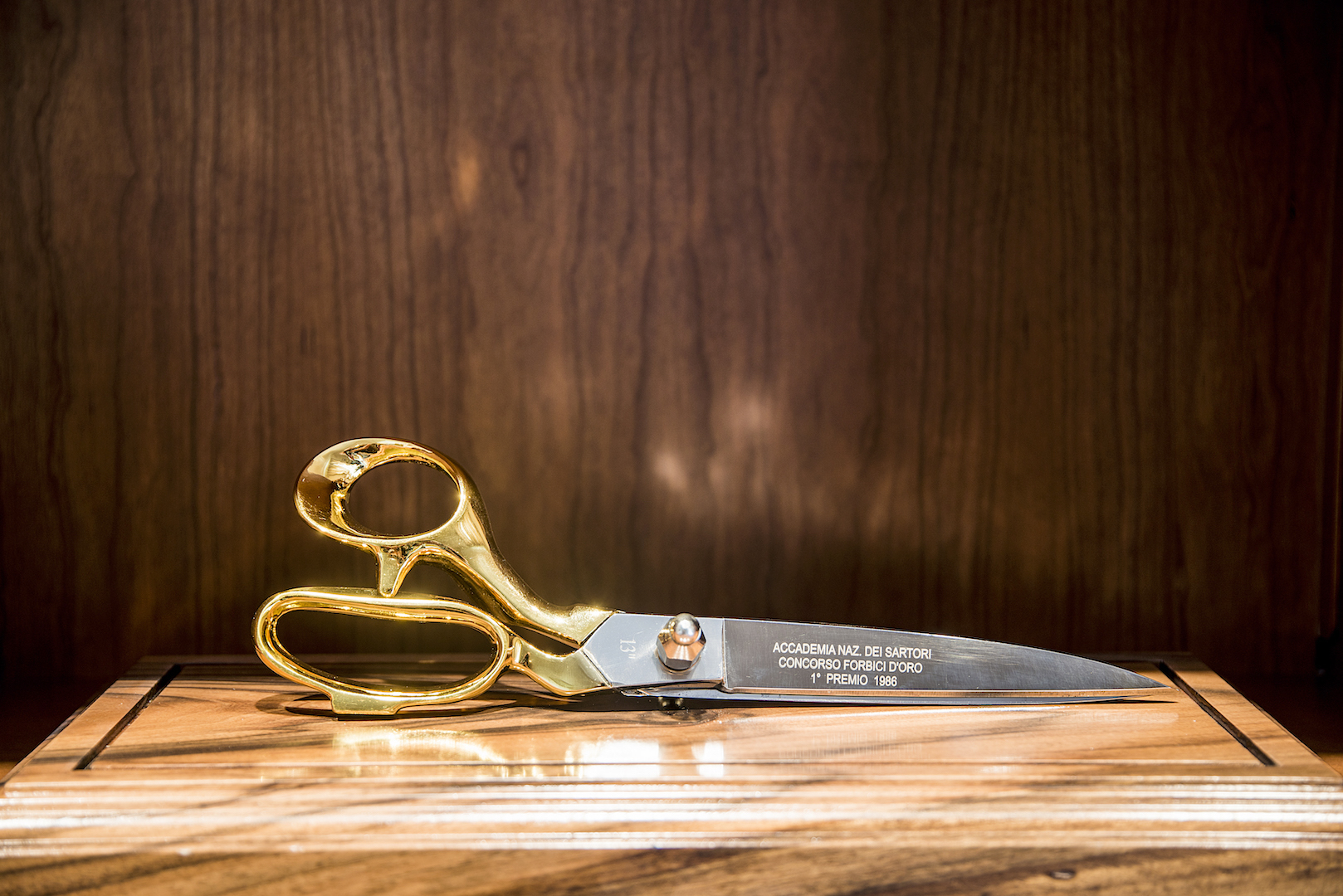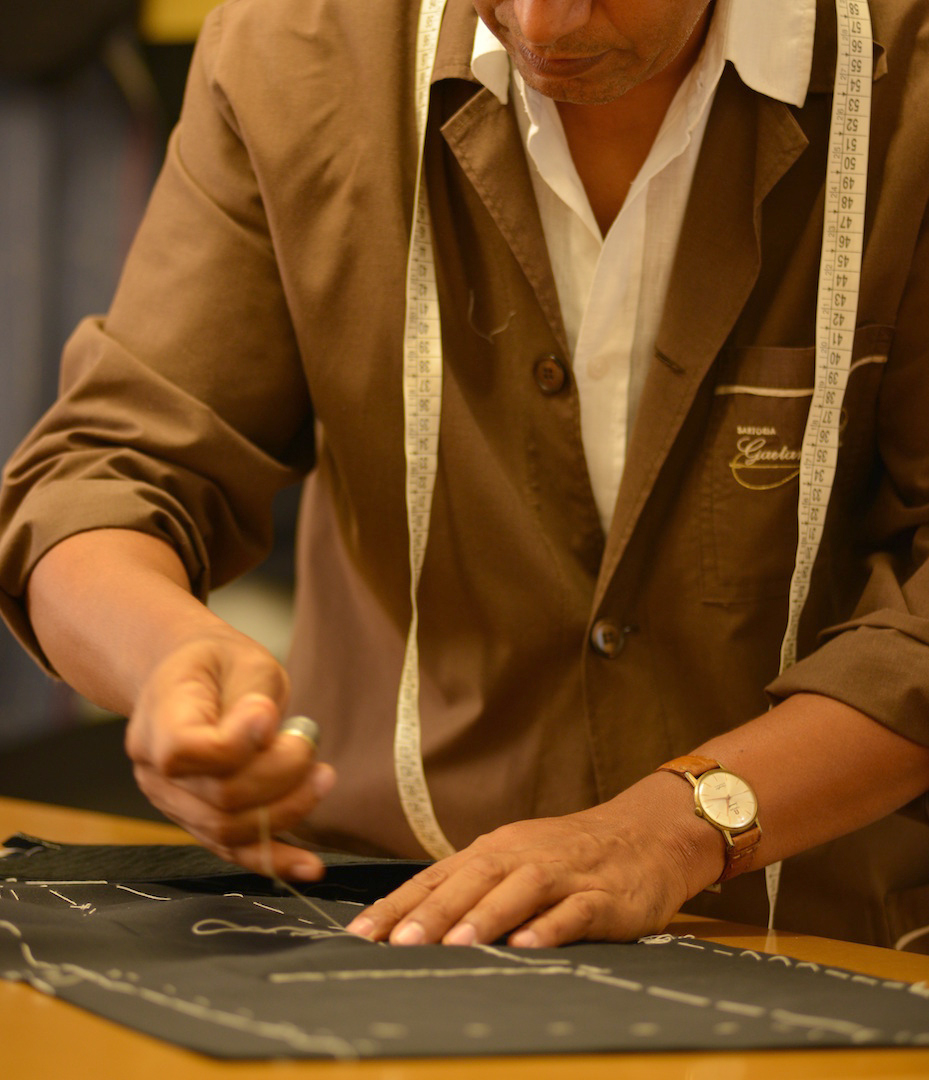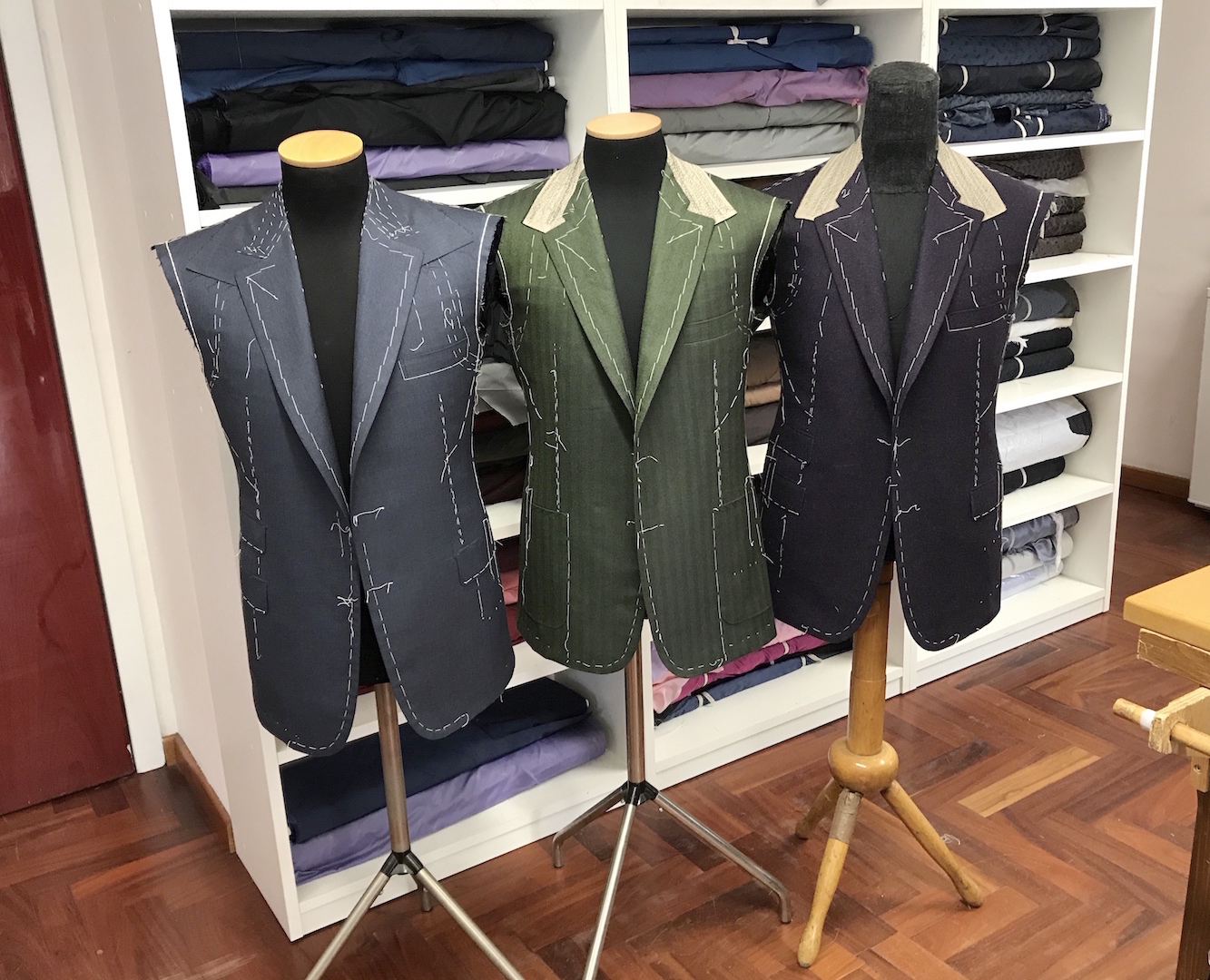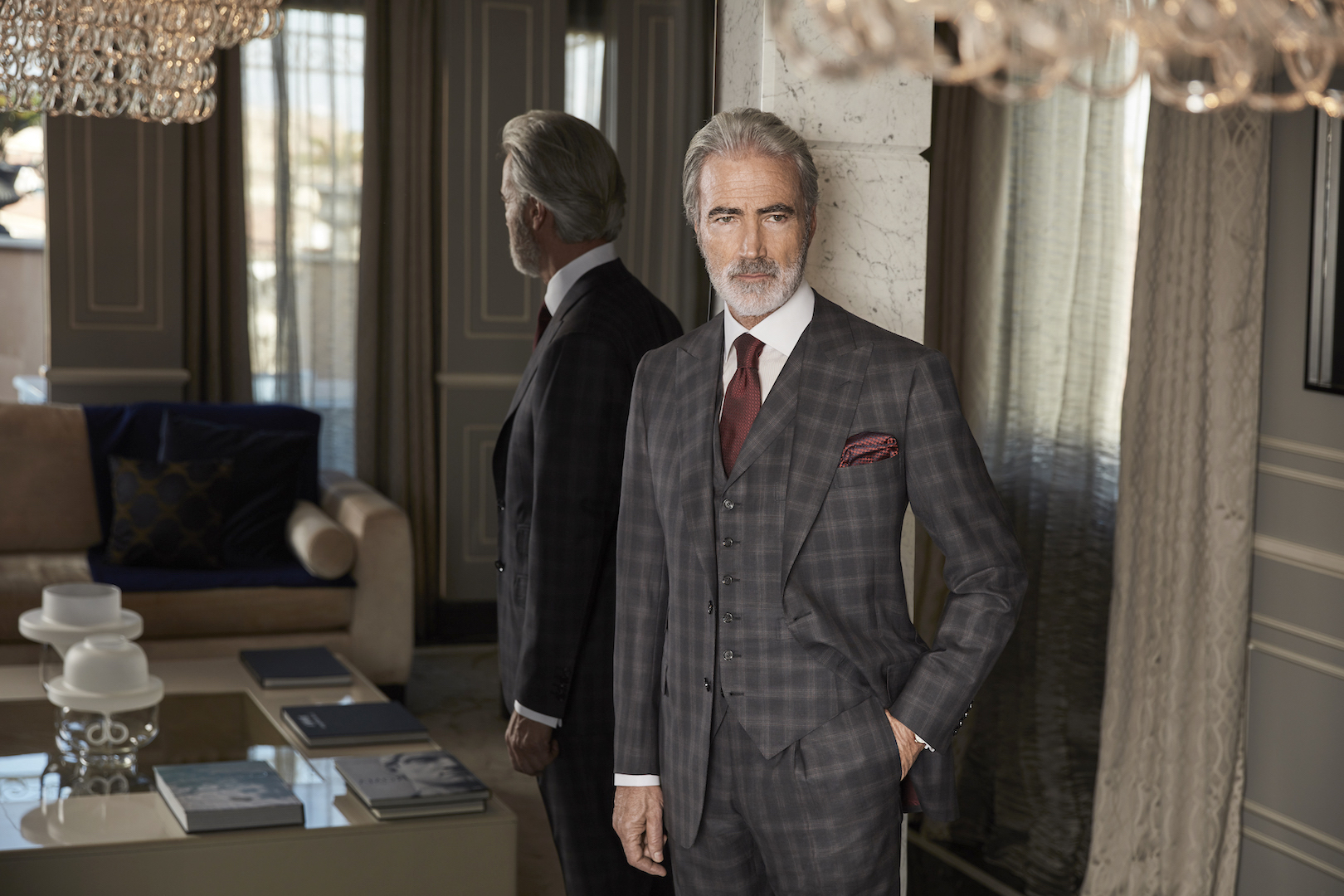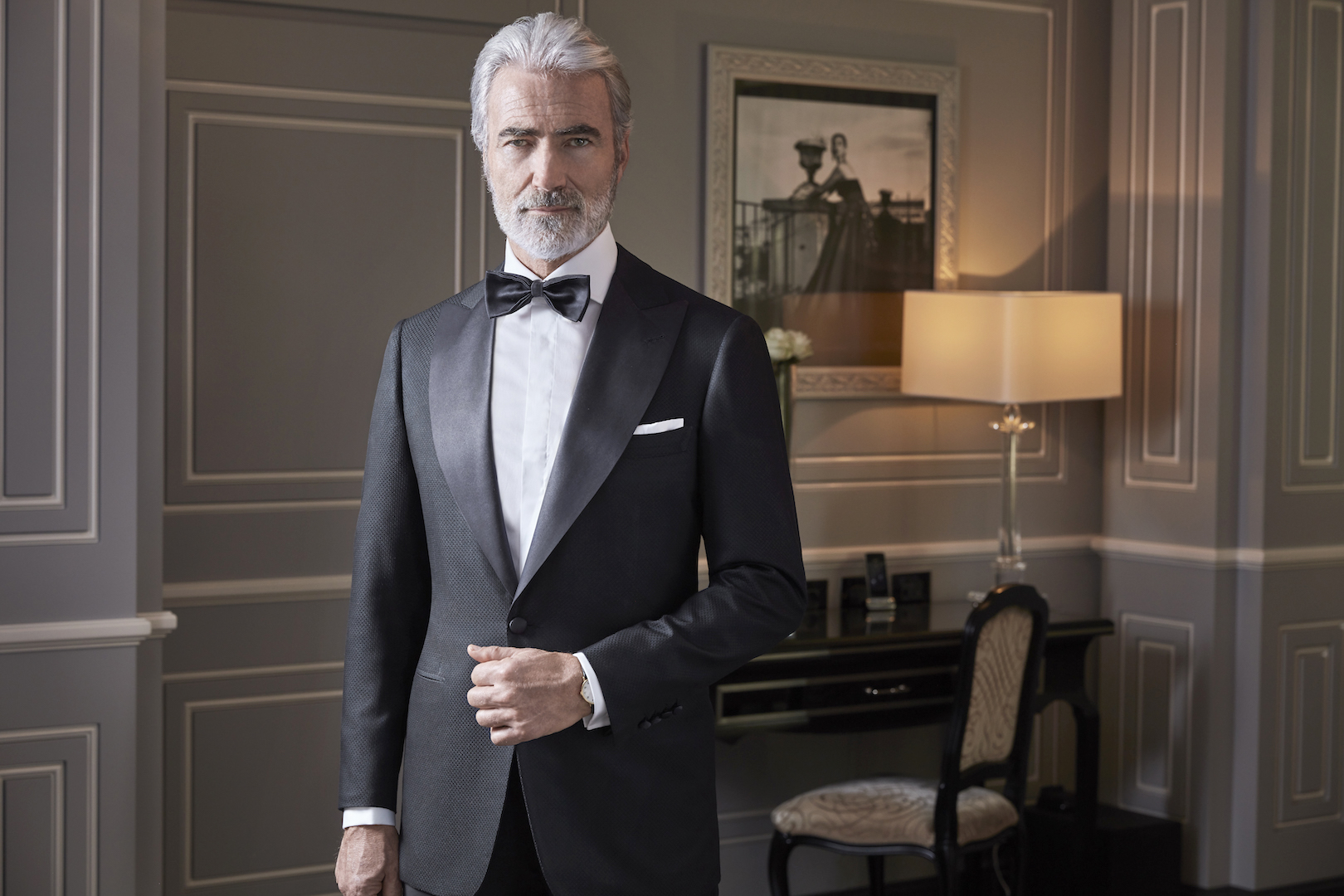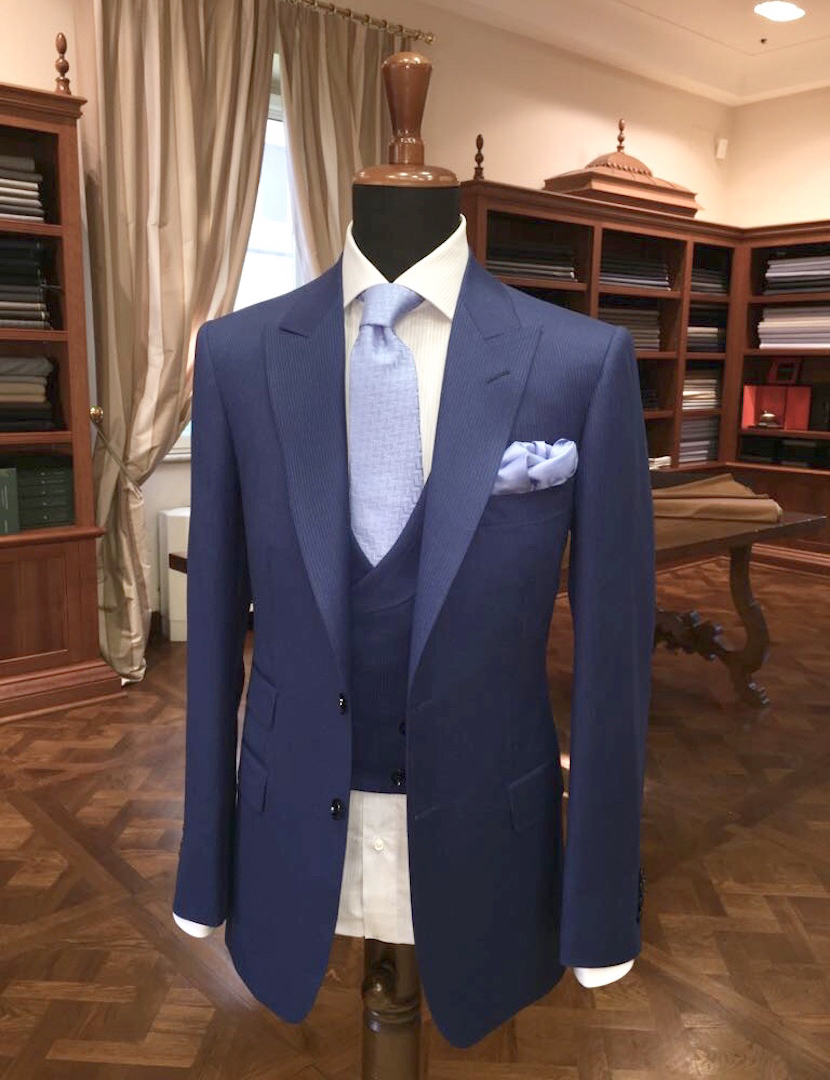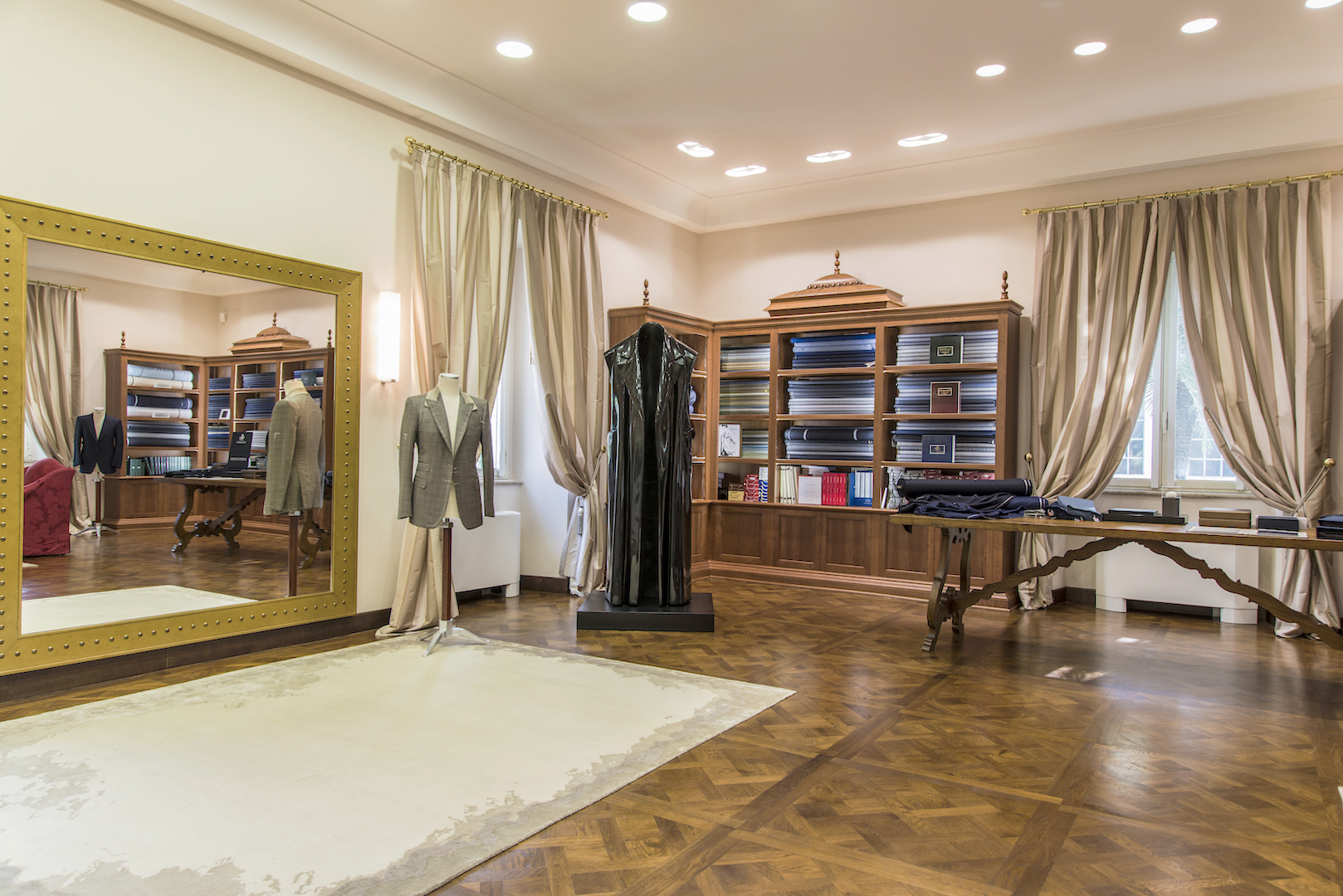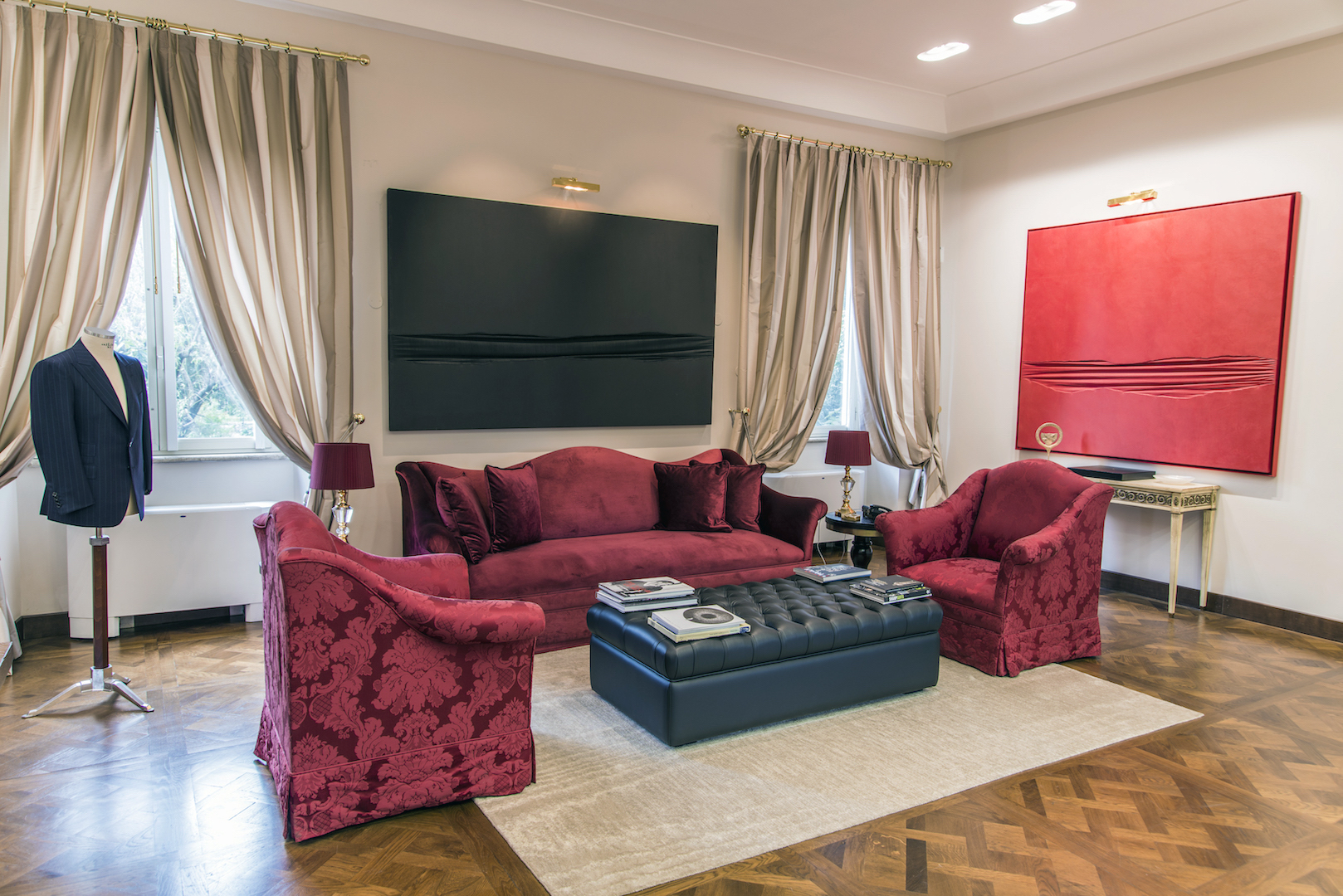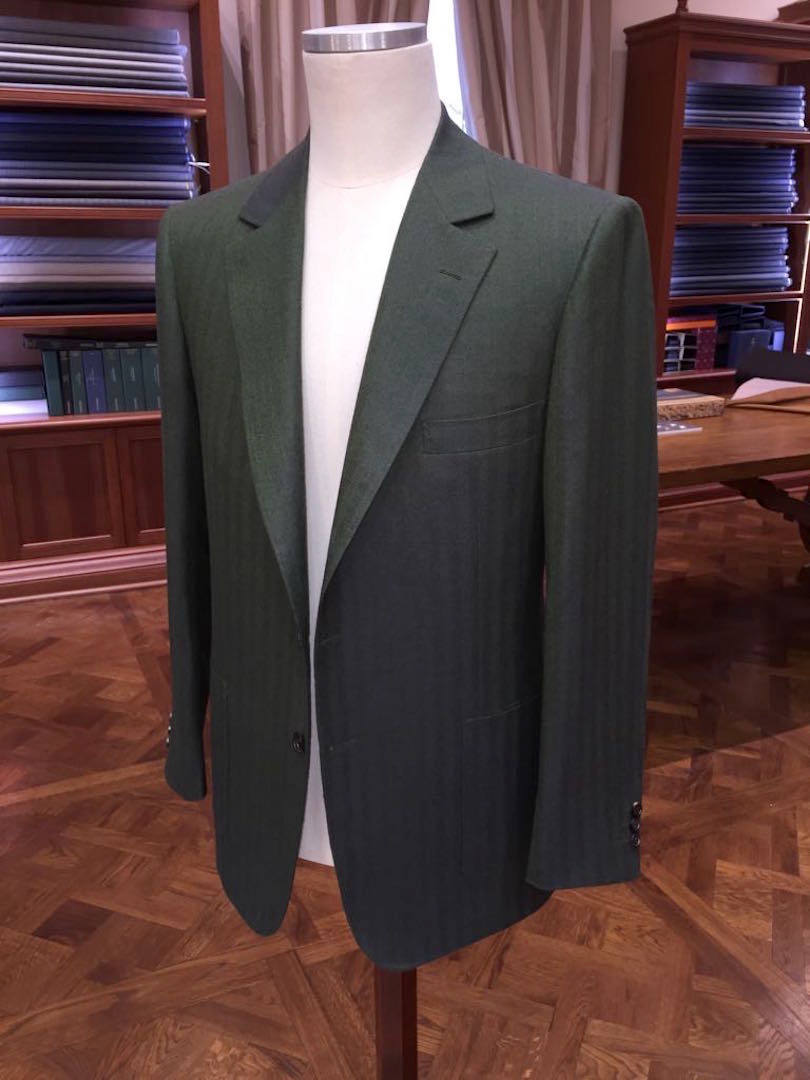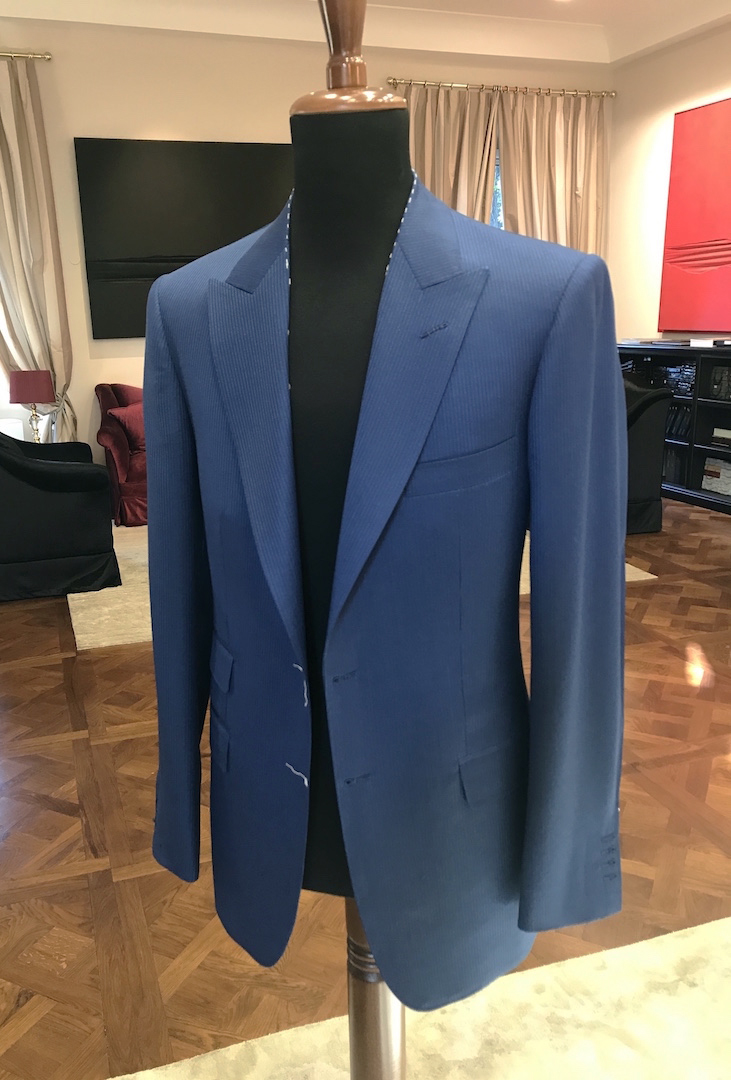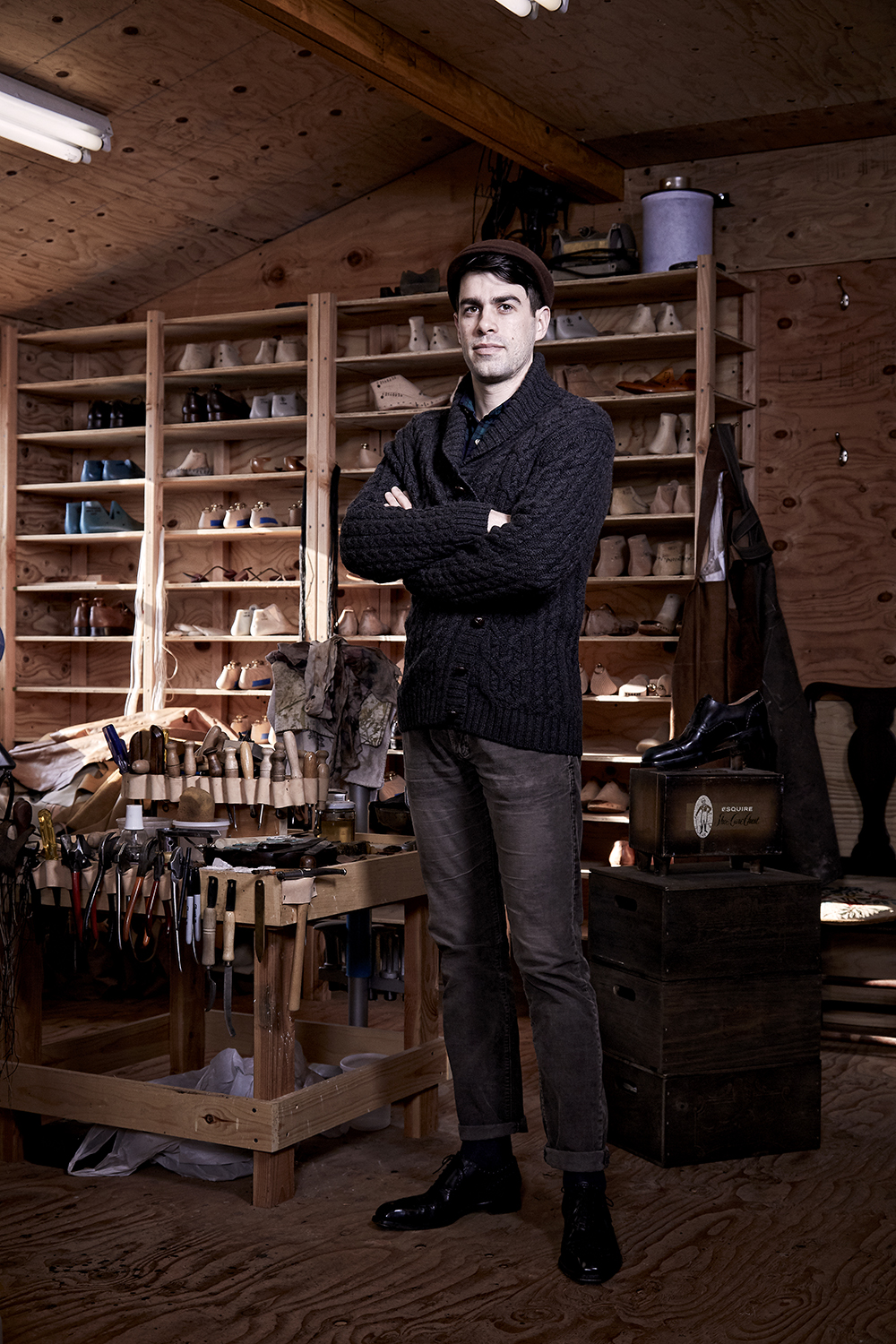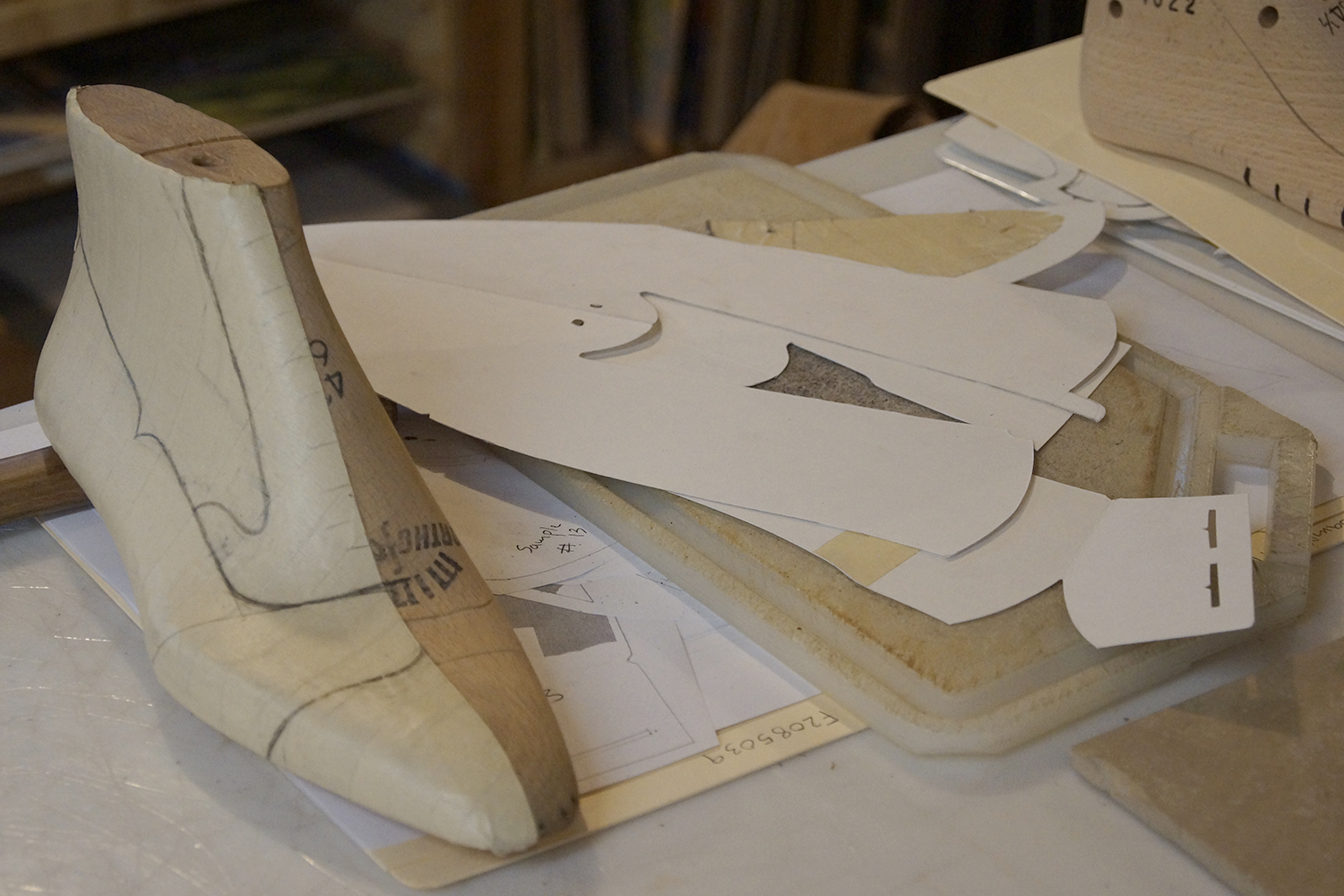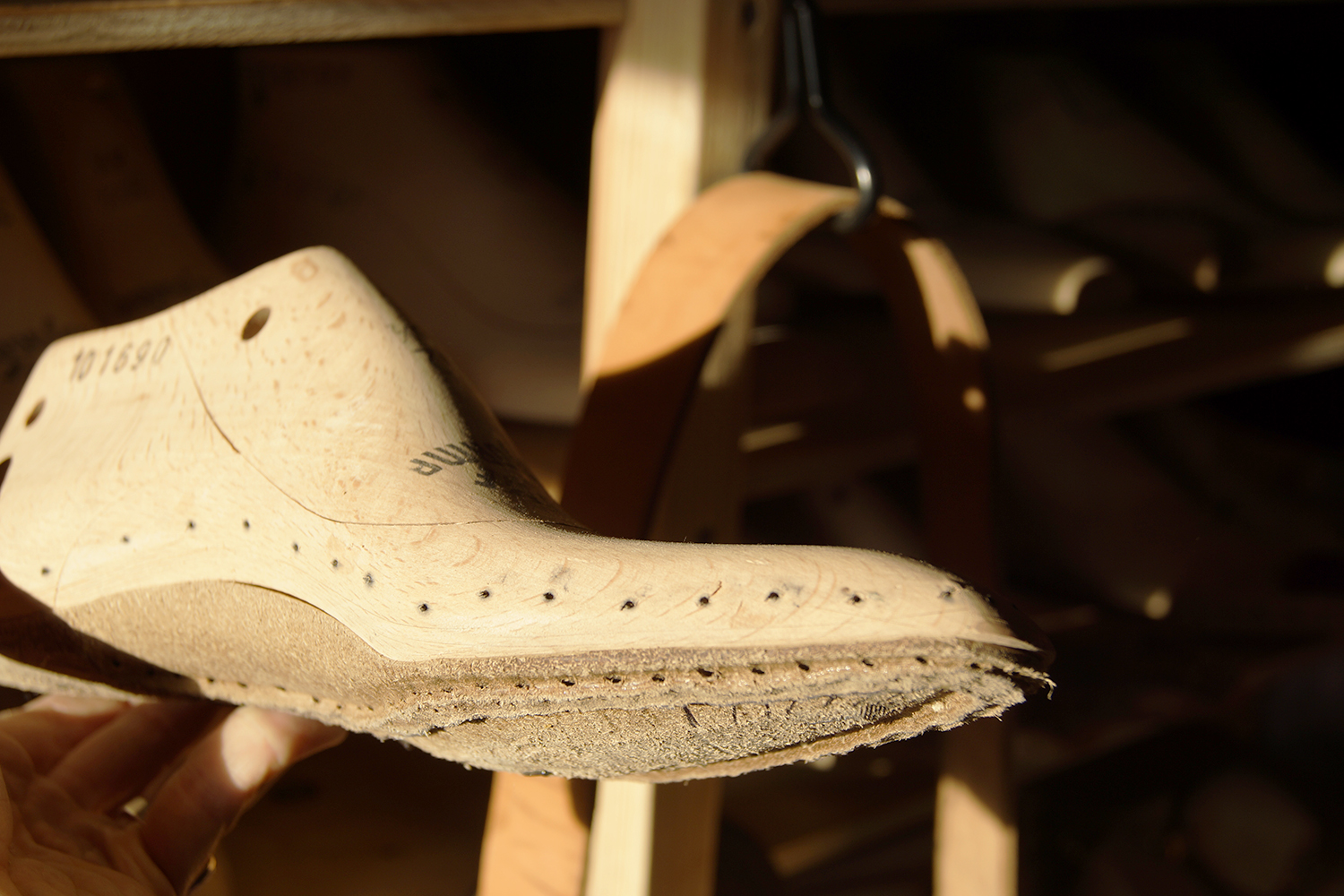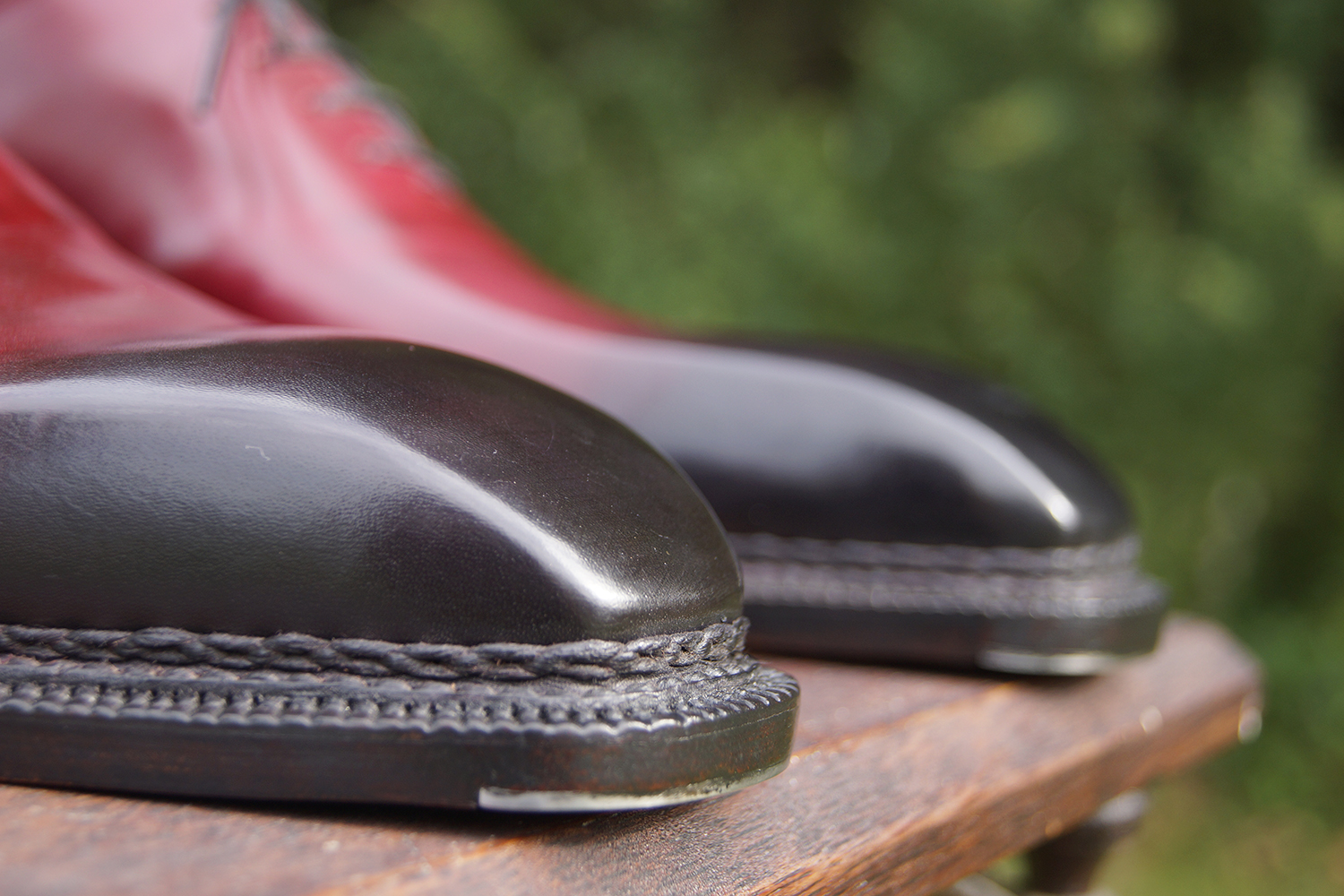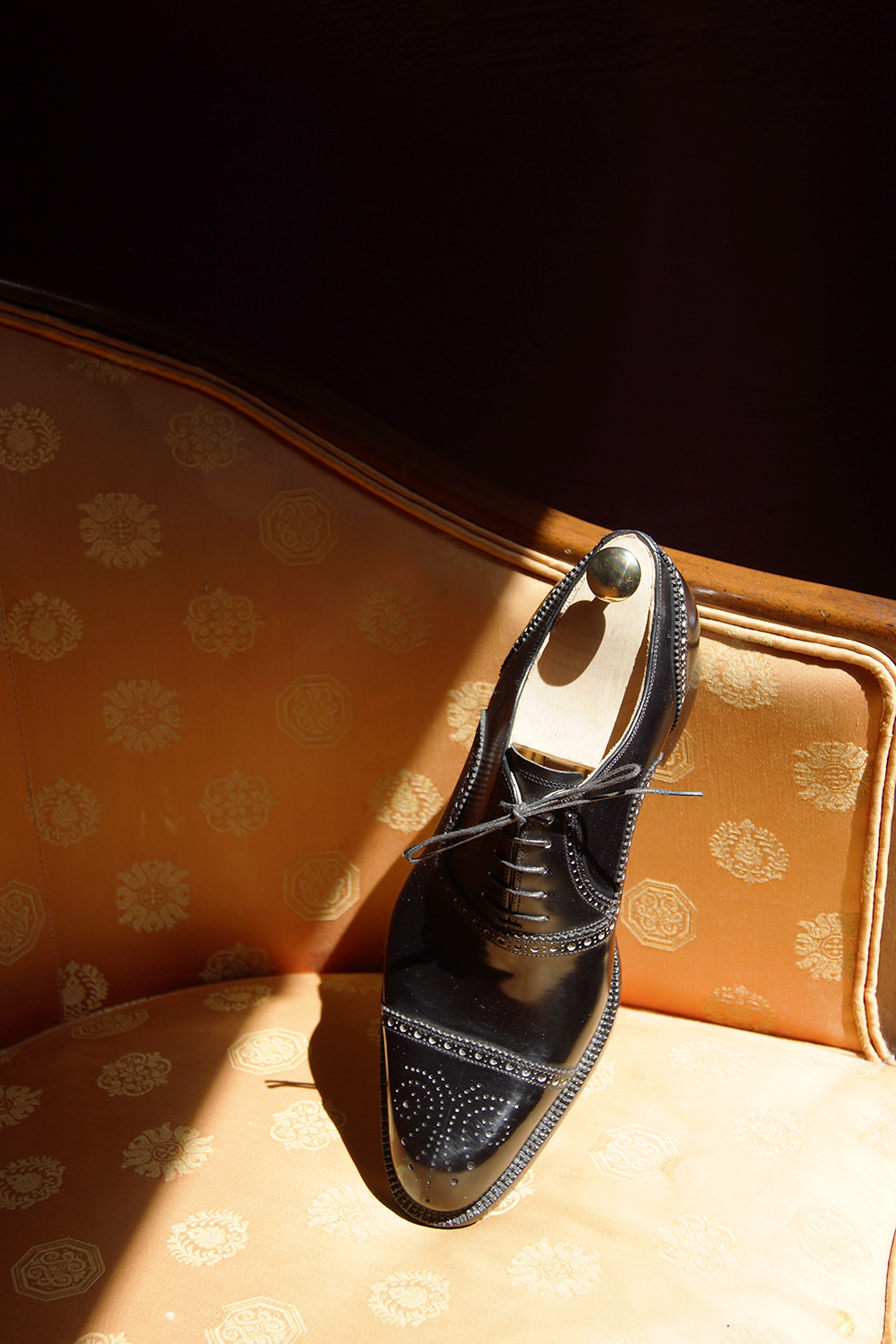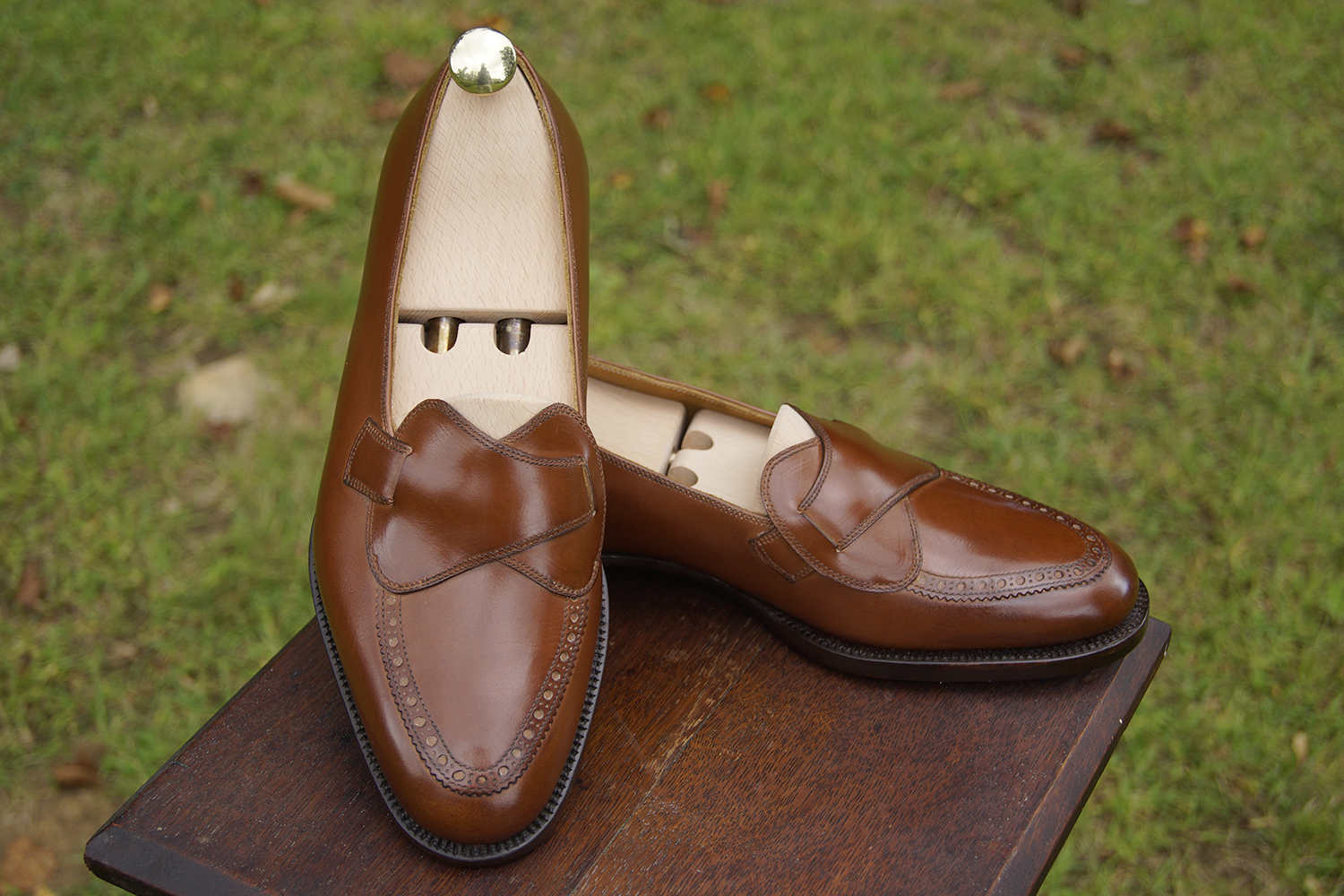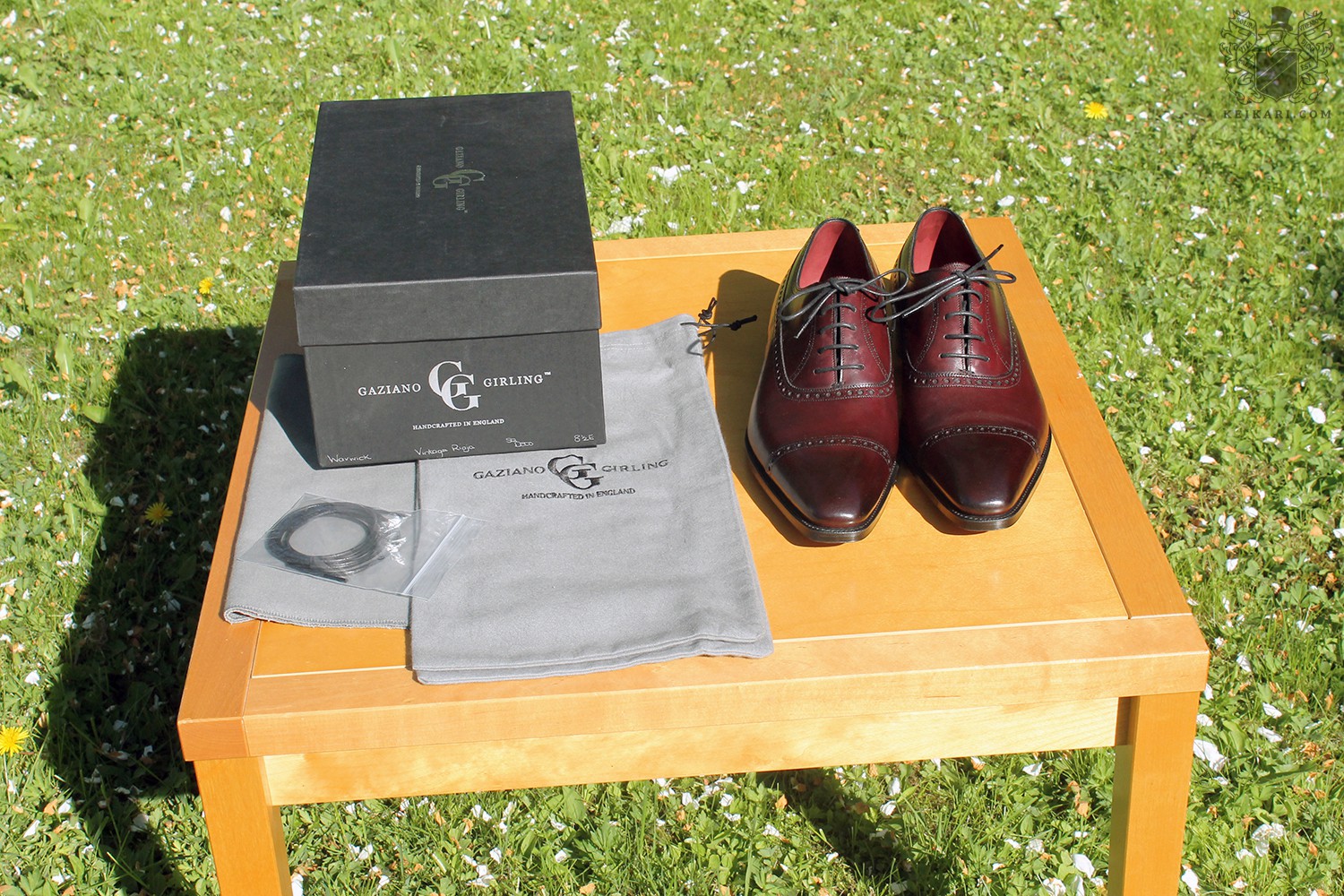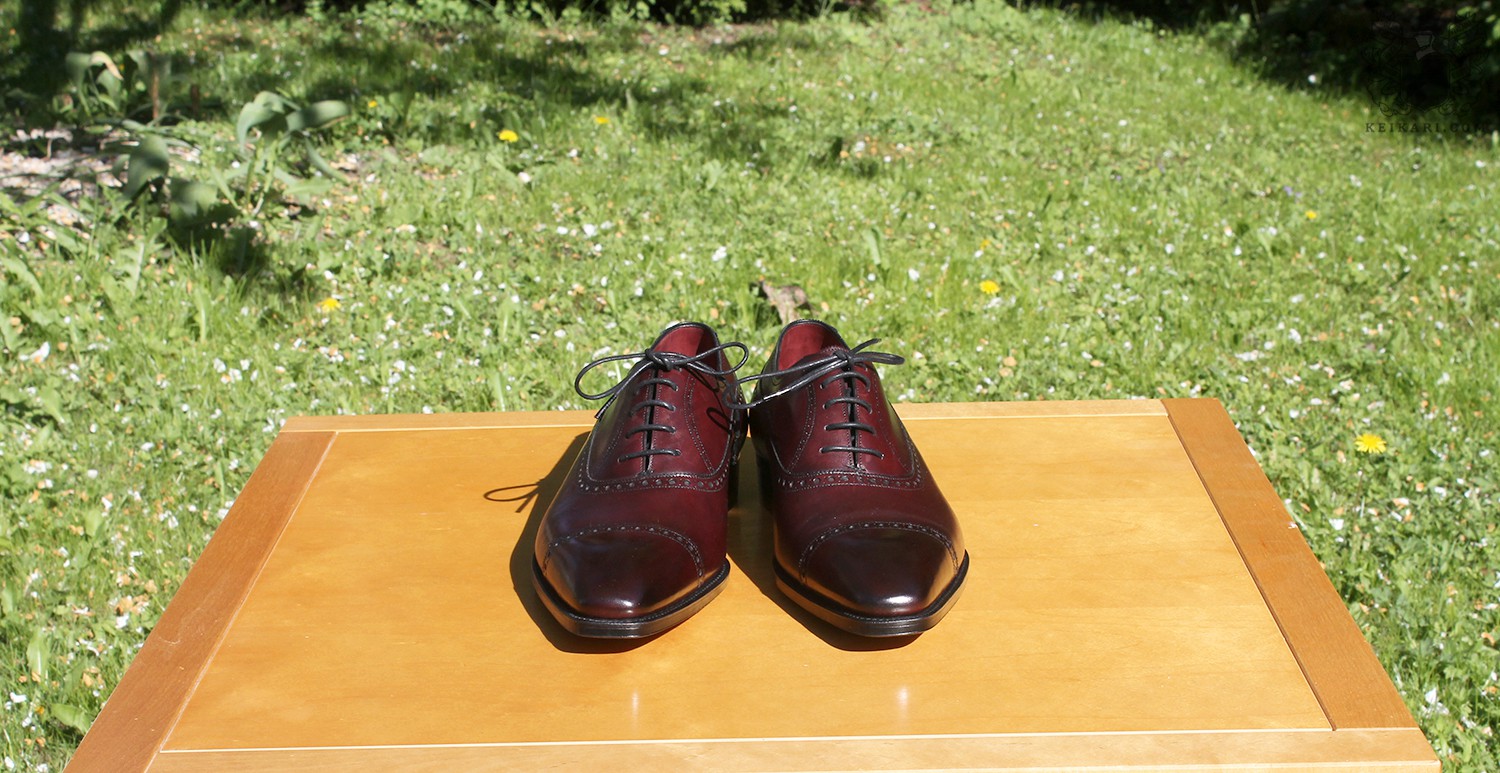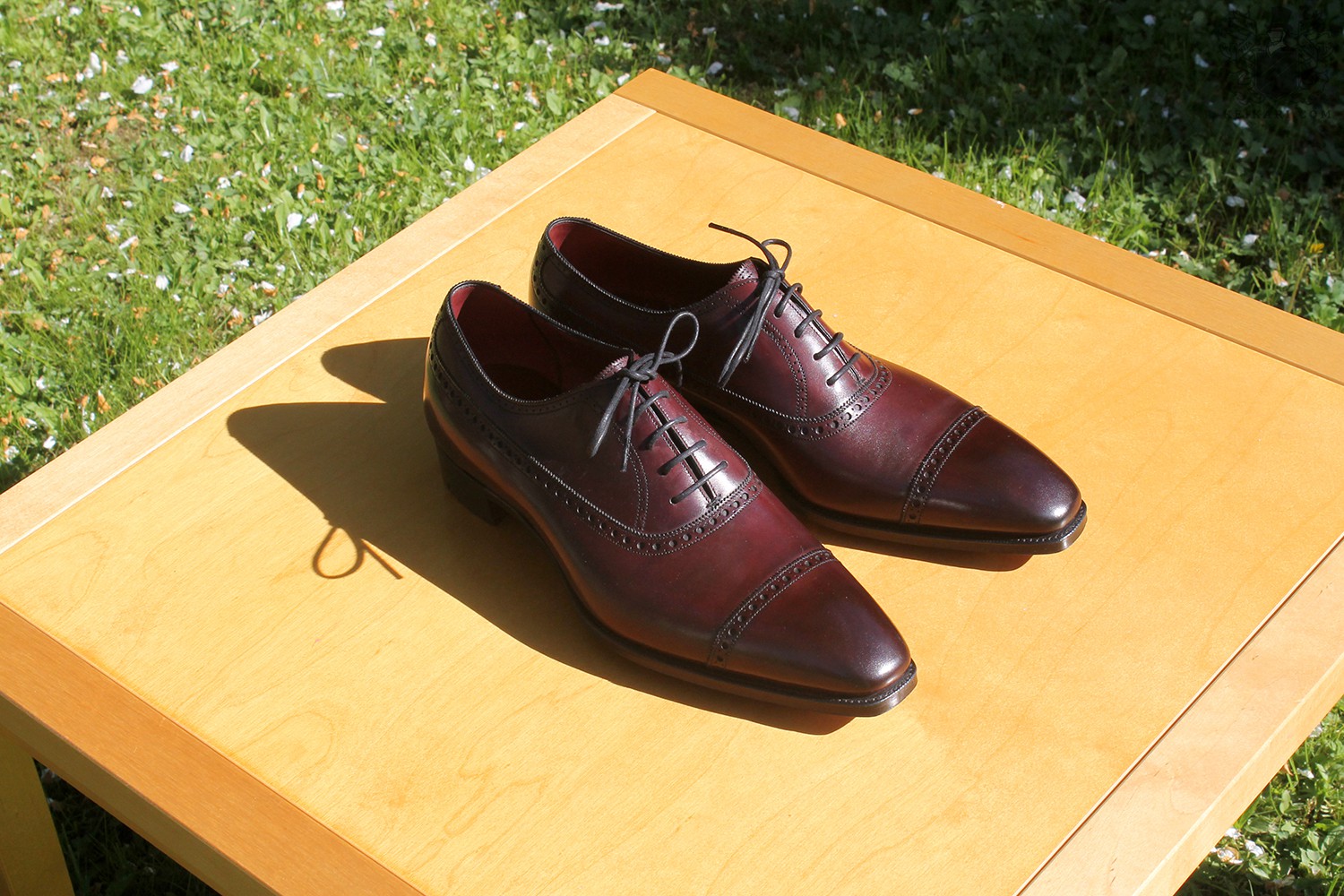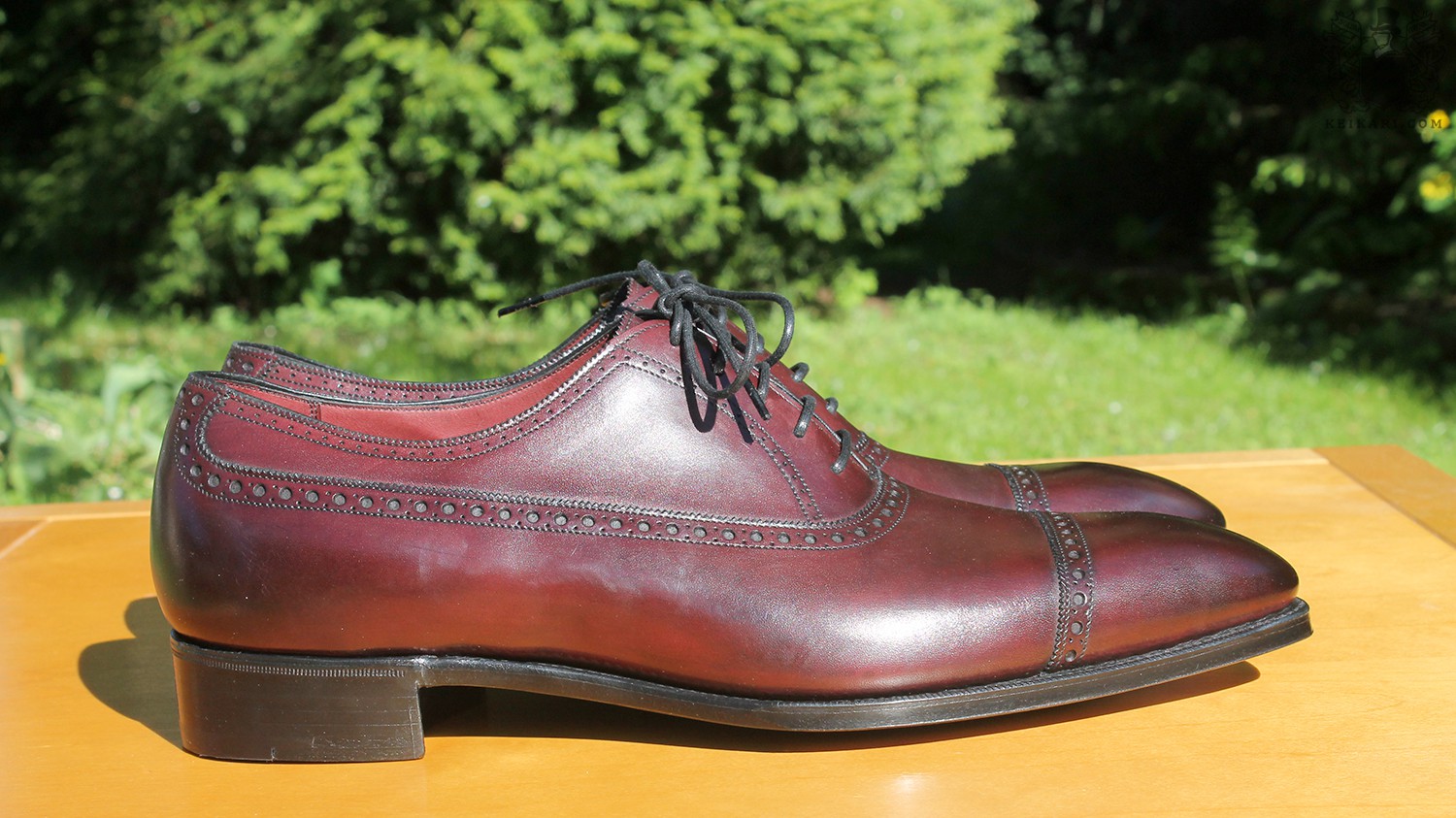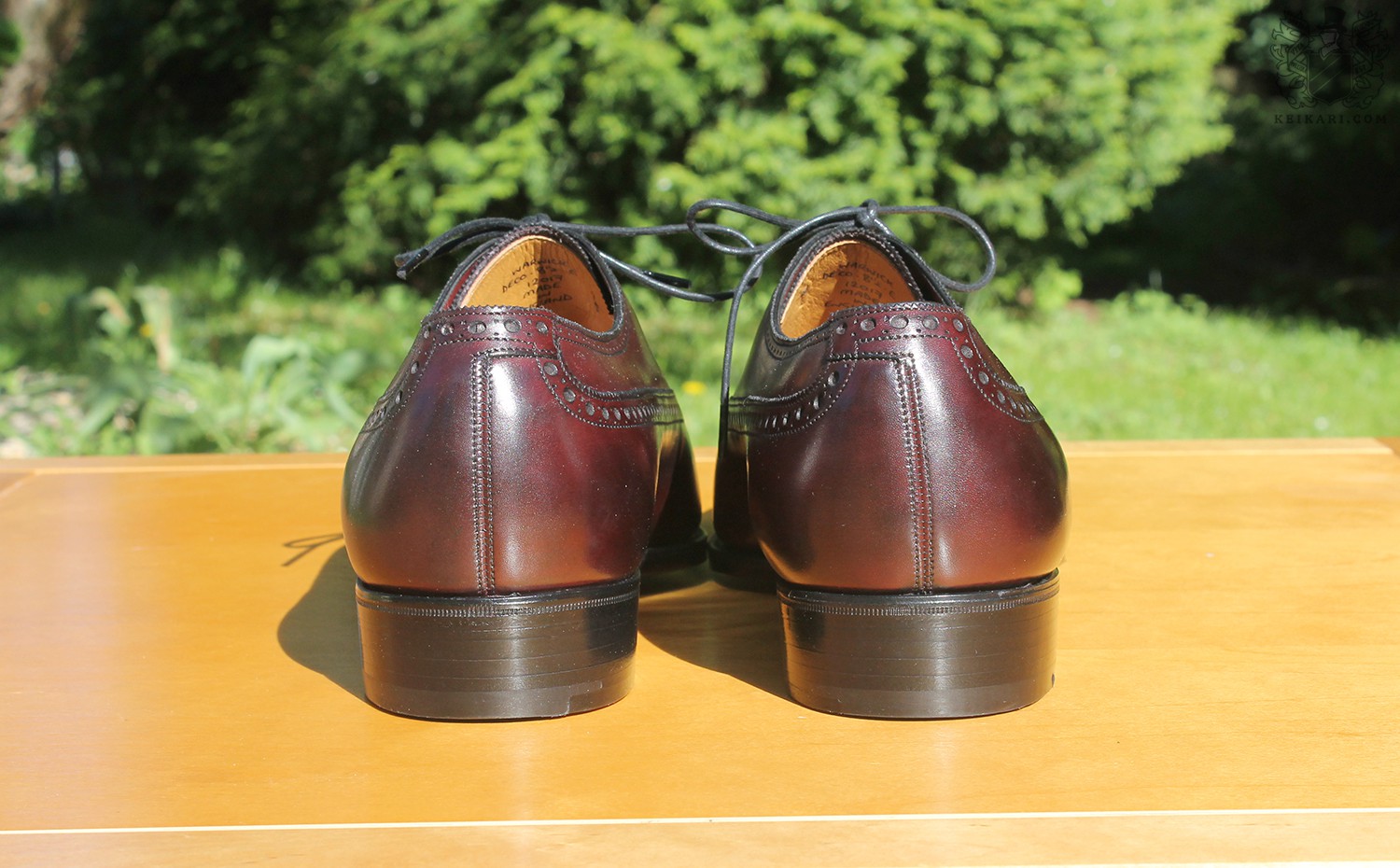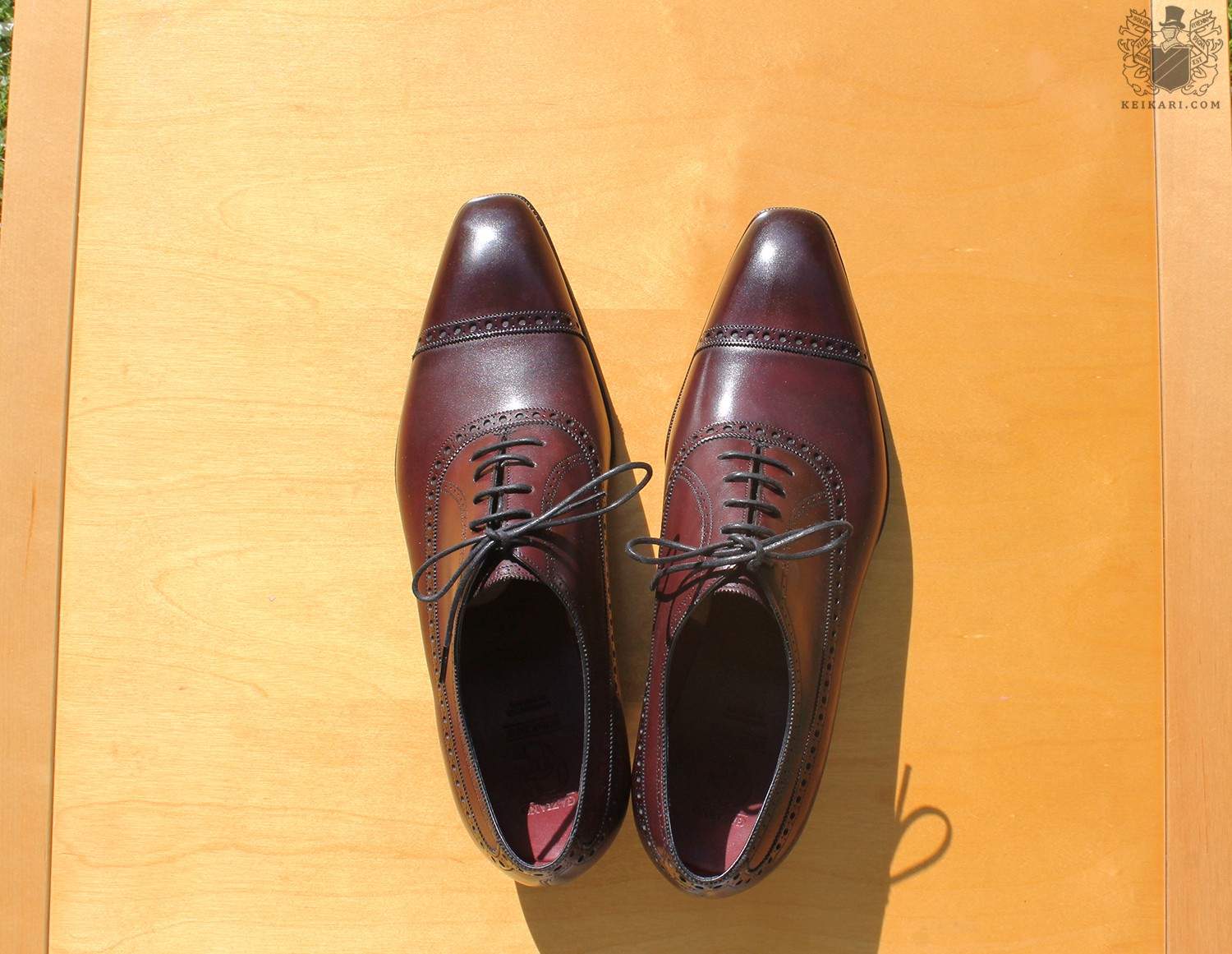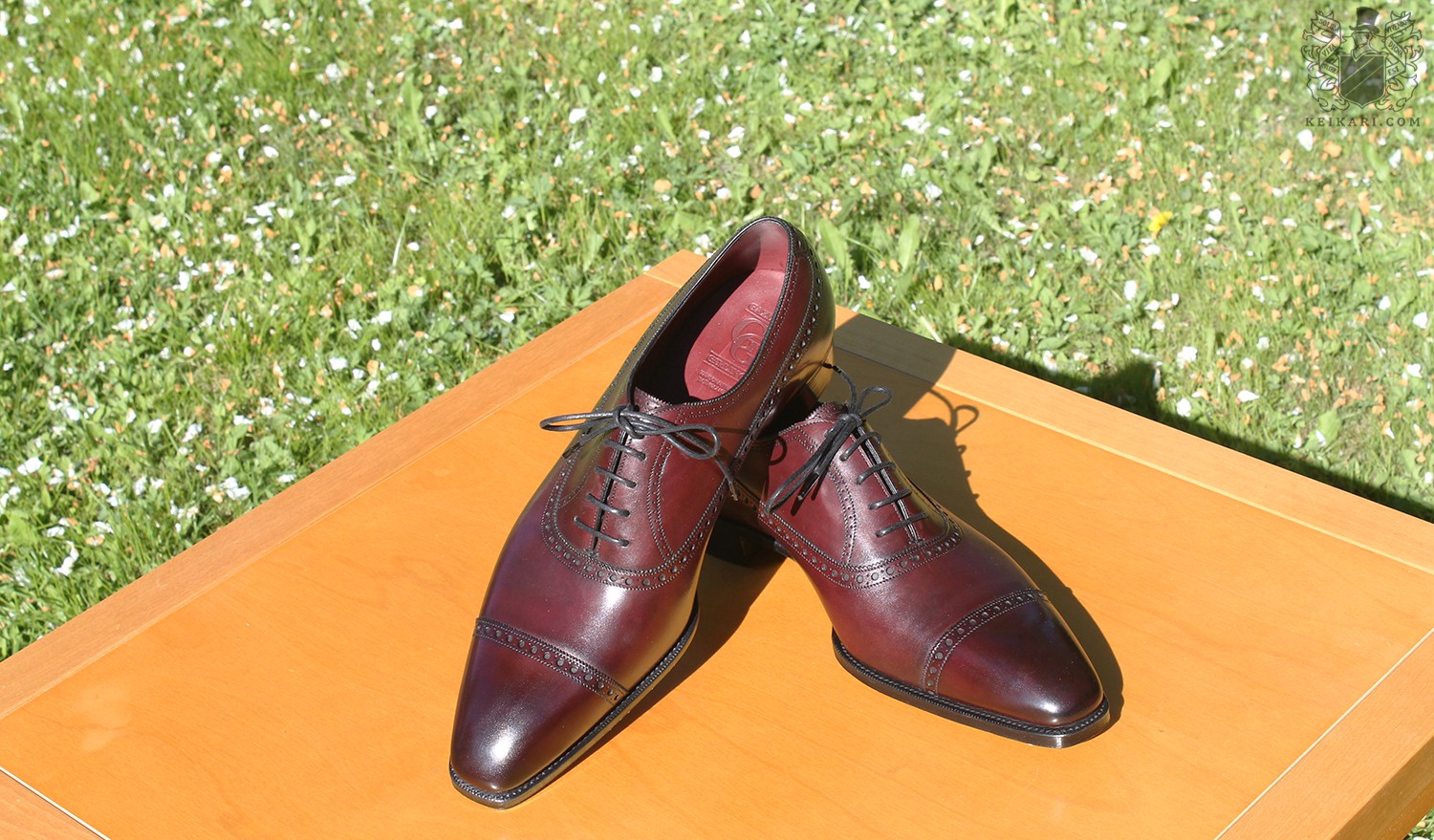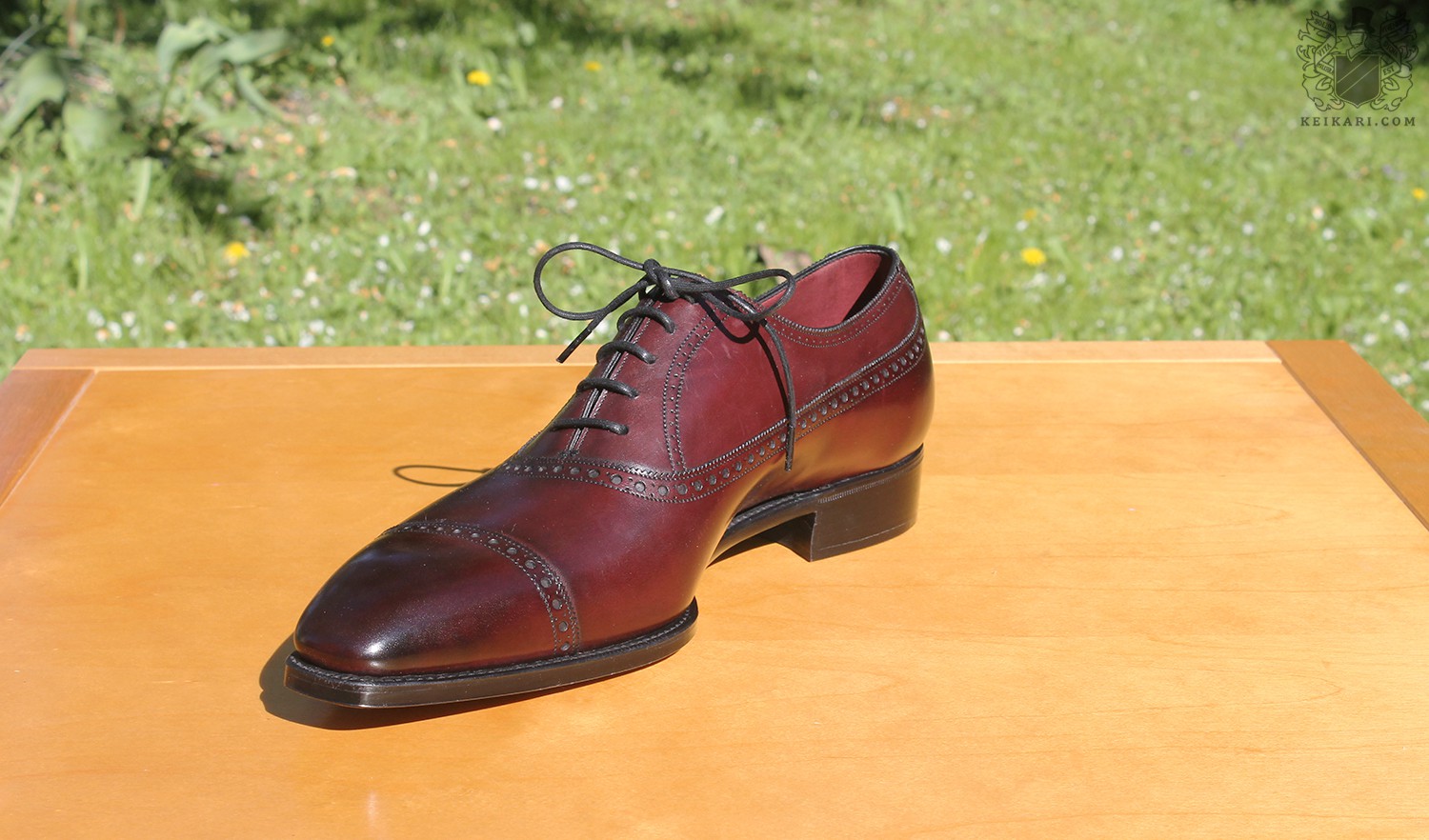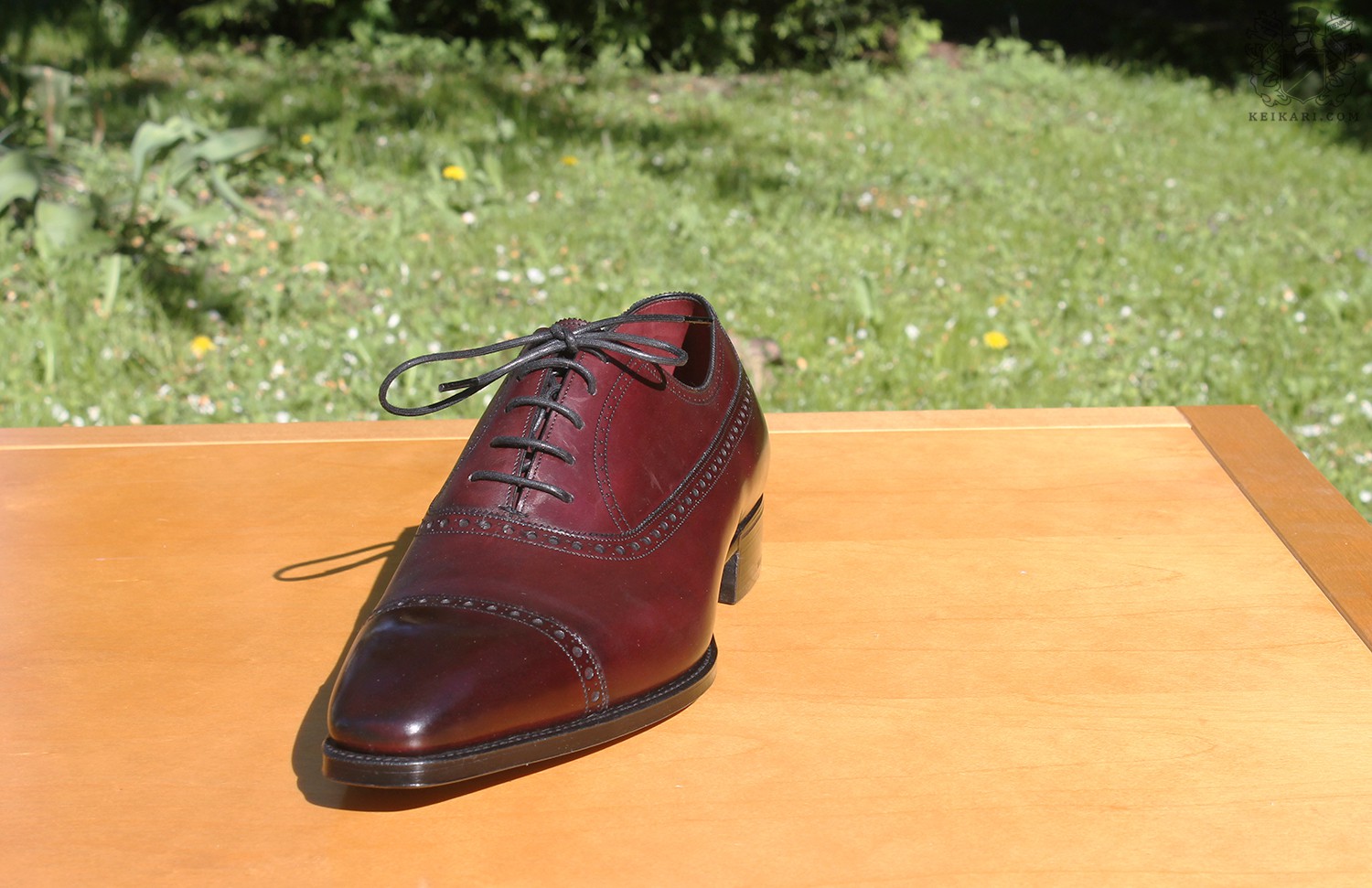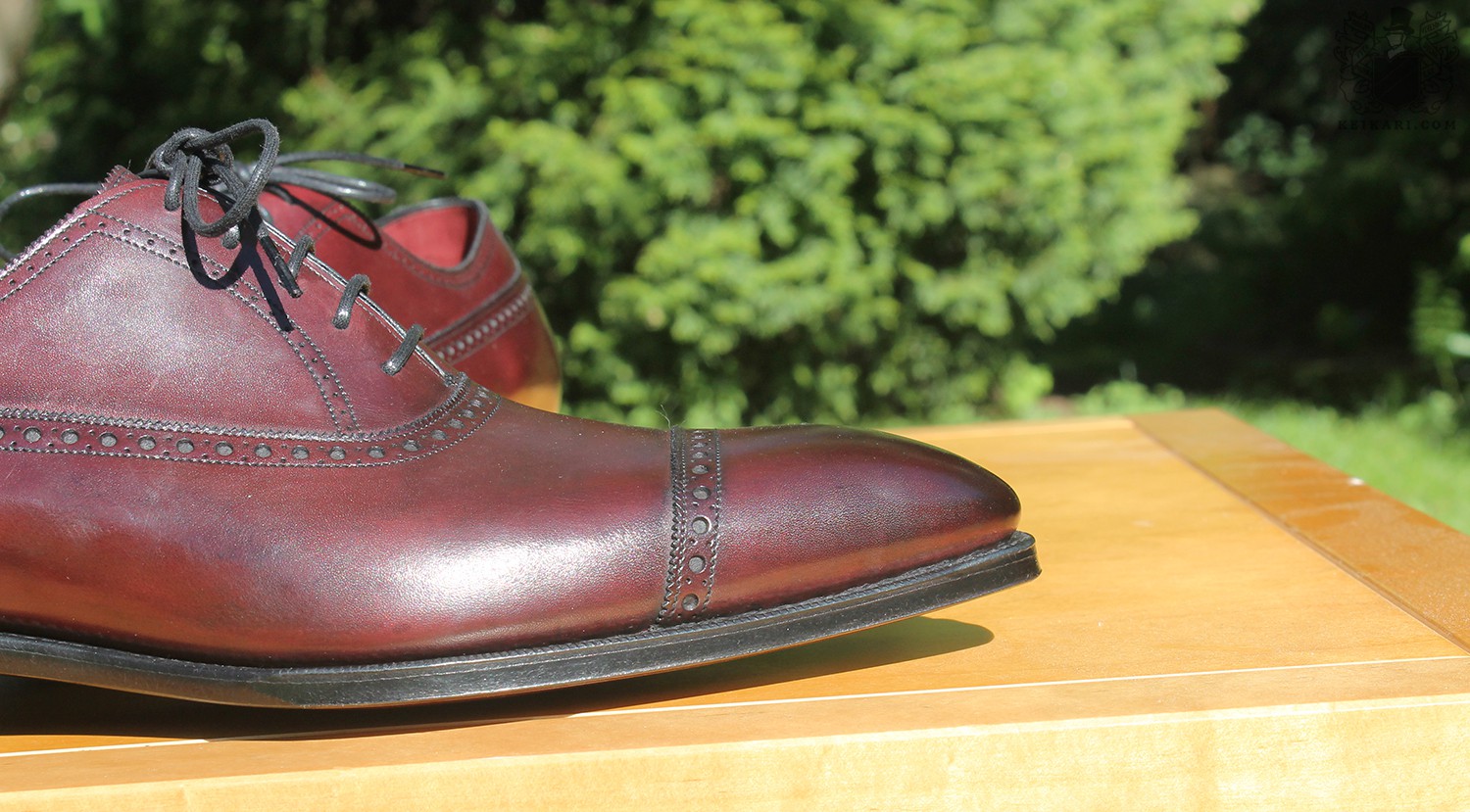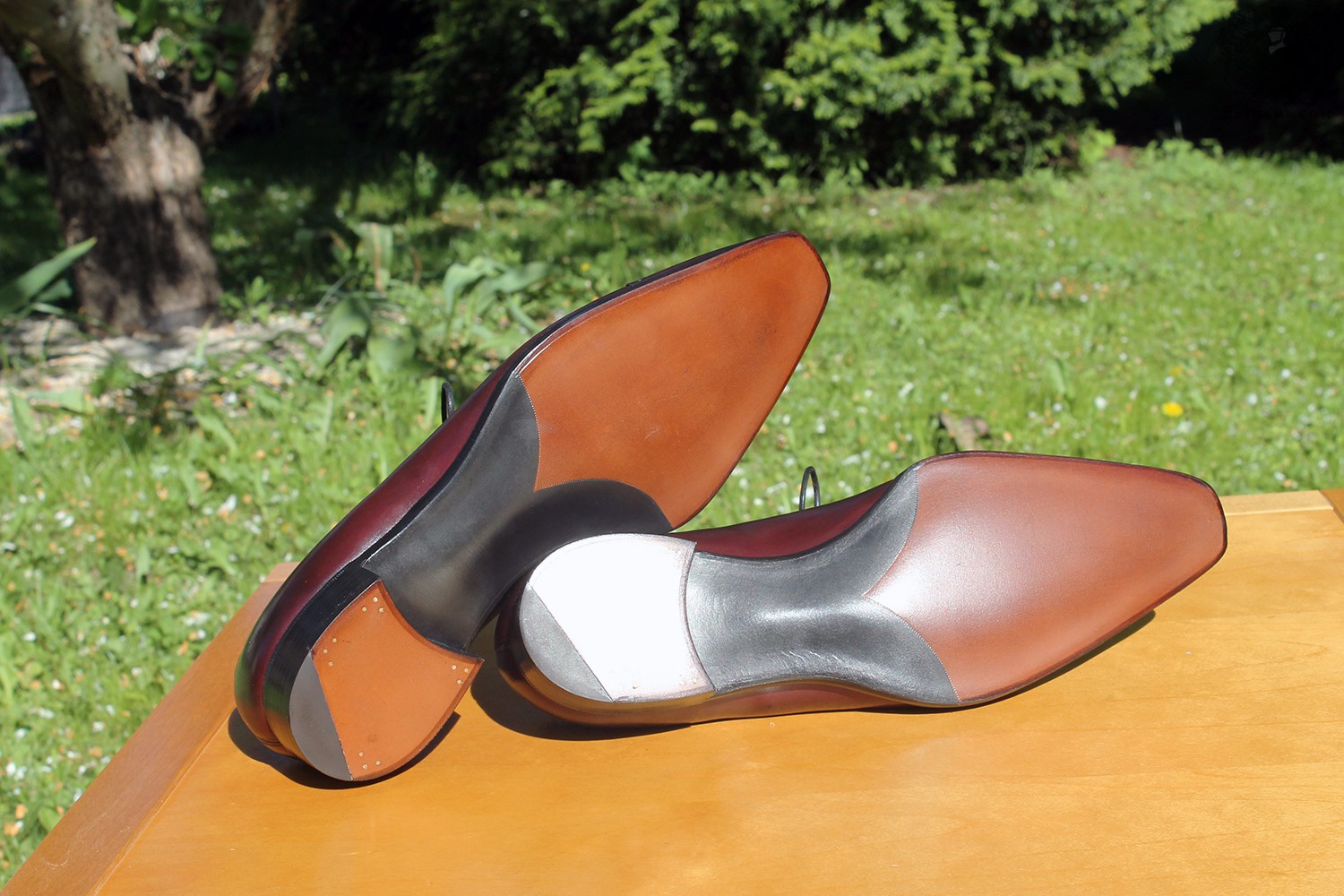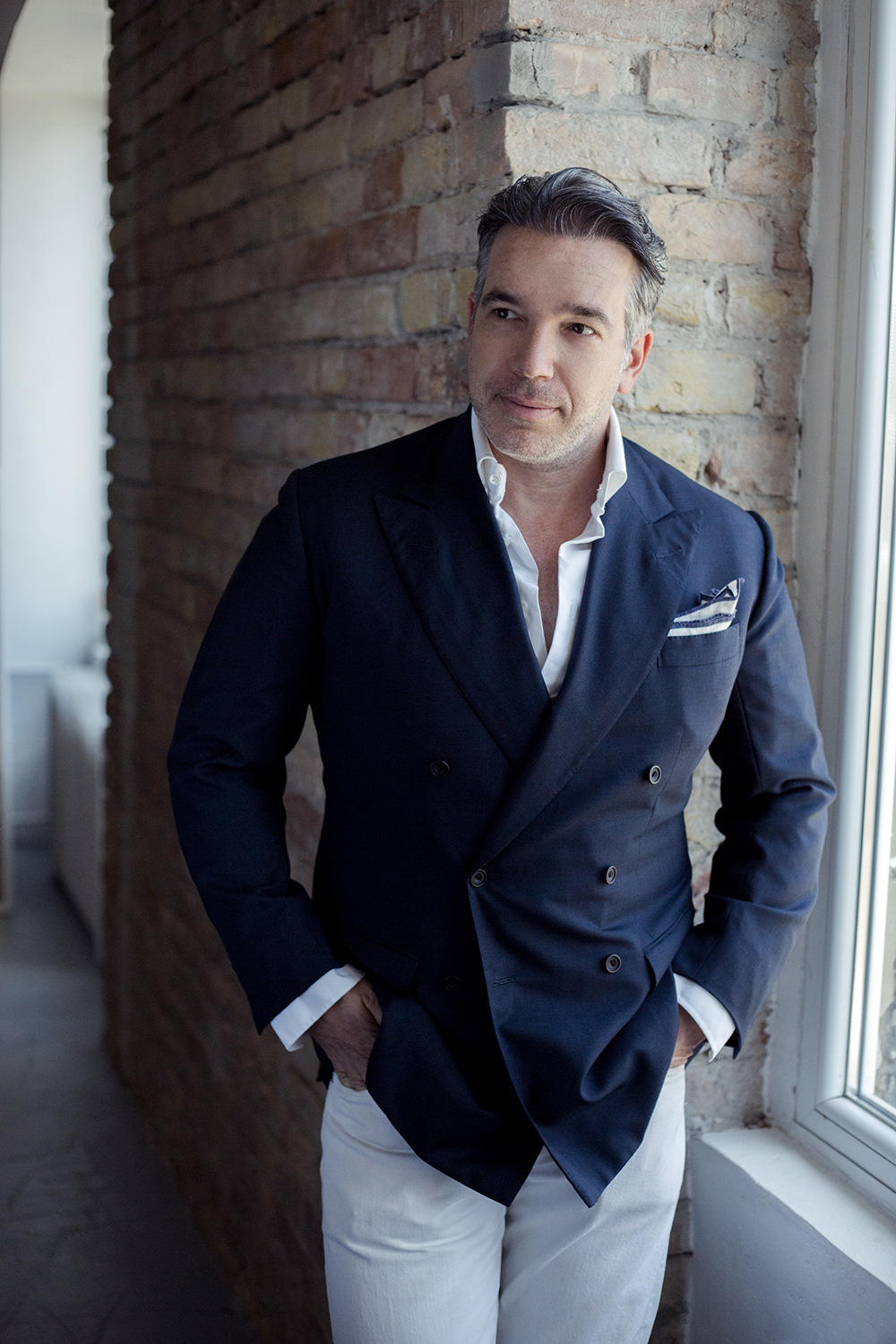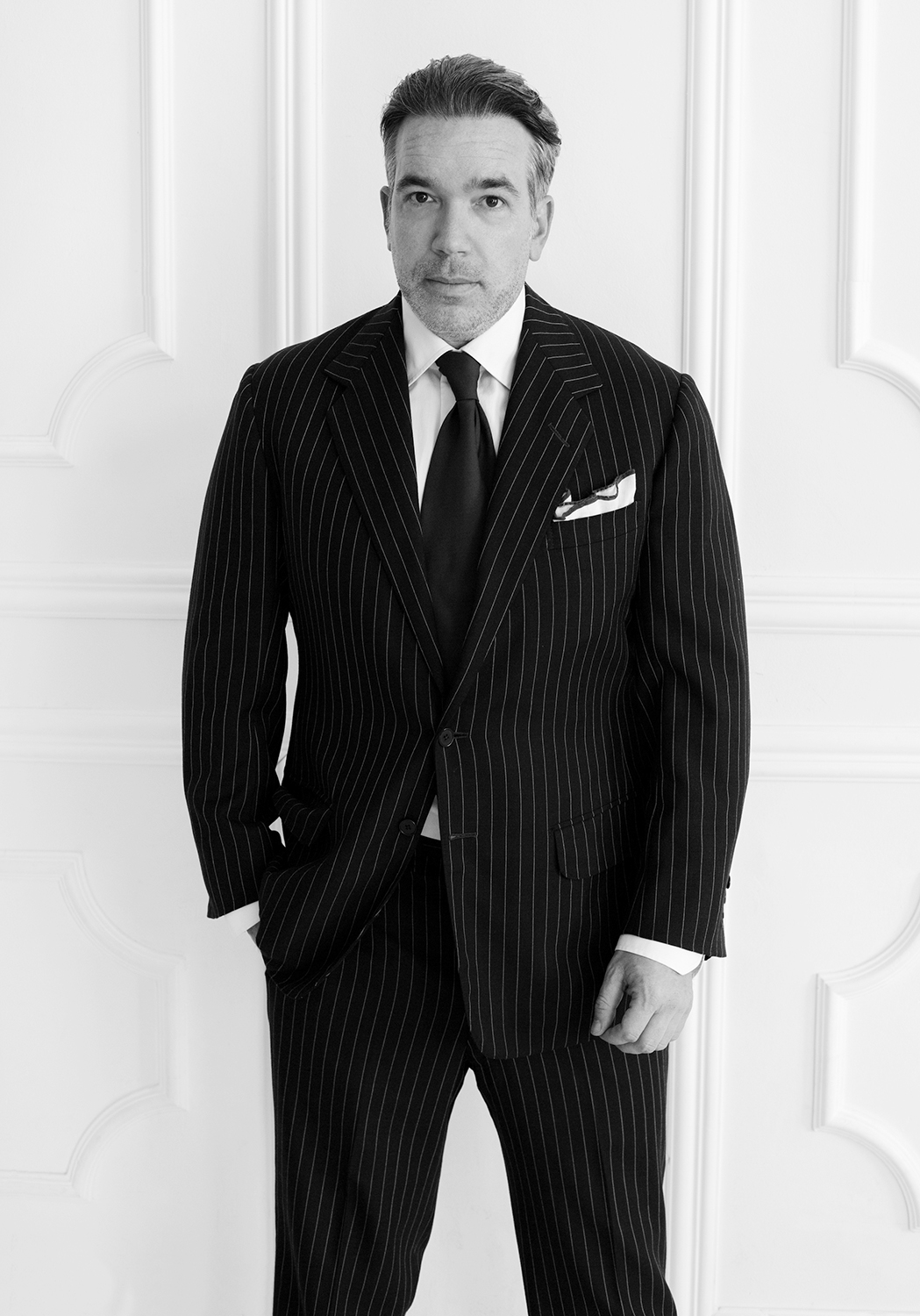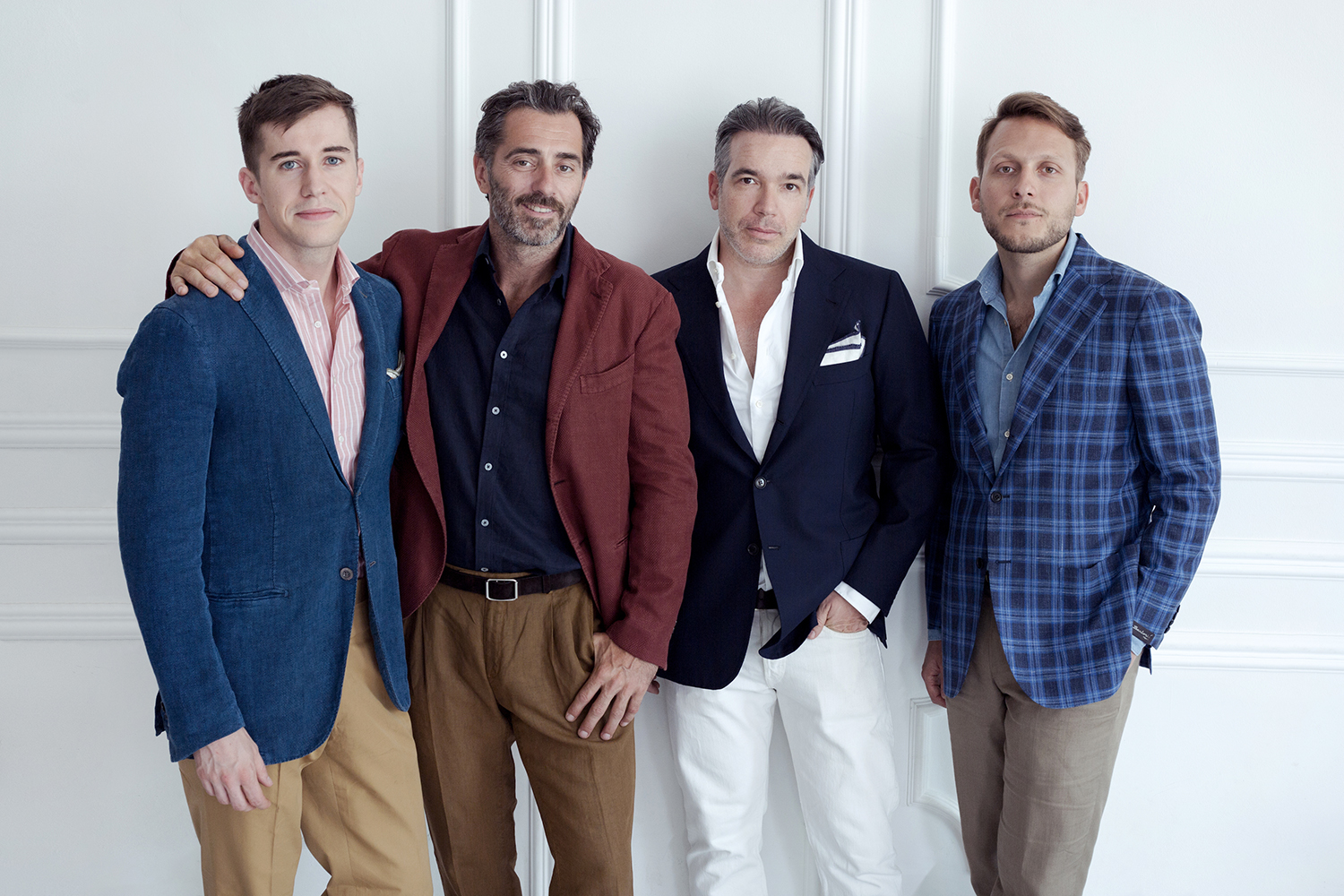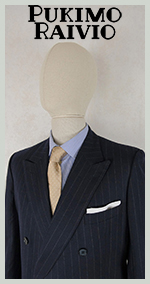Interview with Gaetano Aloisio
0June 20, 2018 by Ville Raivio
VR: Your age and occupation?
GA: I am 54 y.o. and I am a tailor.
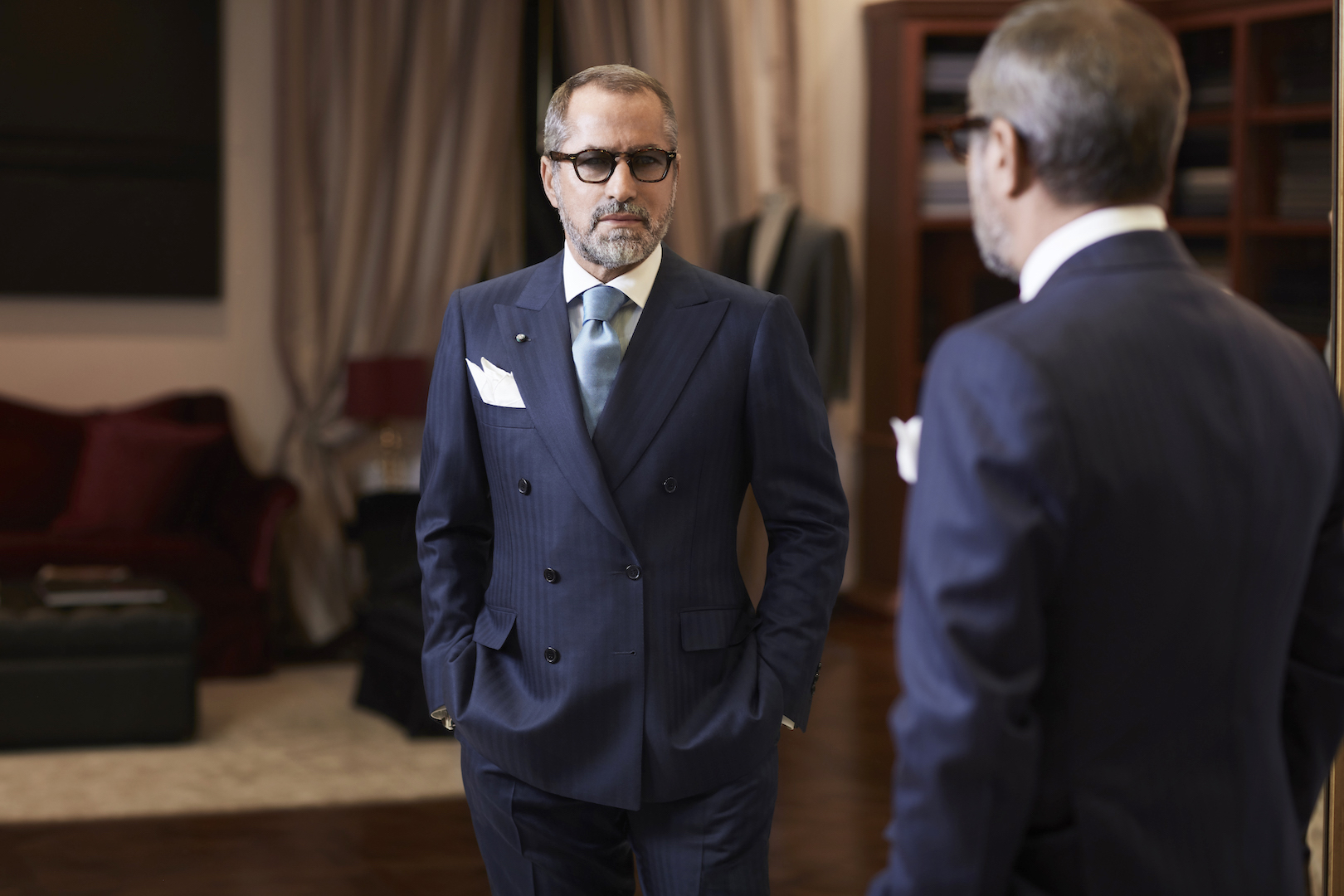
VR: Your educational background?
GA: High school in Crotone, the city of Calabria, my birth region, and studies in tailoring.

VR: Have you any children or spouse (and how do they relate to your tailoring enthusiasm)?
GA: My wife is the General Manager of our company. We have an 8-year-old-son. My wife is very proud of what I do. She not only sees the finished result of my work but also lives it from within. And when she talks about my work with admiration and enthusiasm, it’s the best compliment for me. My son grows up in the Atelier. He’s very curious about every step and detail. But sometimes he asks me to change my occupation because he sees me very little when I travel
A Golden Shears-award from his younger days
VR: …and your parent’s and siblings’ reactions back in the days when you began?
GA: My father followed me, step by step, from the beginning of my professional growth. He has always been proud of my choices and me. There is no other tailors in my family. I hope one day that my son becomes a tailor but I will let him choose. Any profession he will choose, he will have my maximum support.
VR: What other hobbies or passions do you have besides apparel?
GA: I am a sailor, a lover of the sea, of good cooking and traveling.
VR: How did you first become interested in clothing, and when did you turn your eyes towards learning tailoring?
GA: At the age of 11 I started to be interested in tailoring, after school I used to go to the “bottega”, the tailoring shop, to learn cutting and sewing. It was just a small tailoring shop in our village in Calabria, with no specific name.
VR: How have you gathered your knowledge of the craft — from books, in-house training, workshops or somewhere else?
GA: I learned my first notions in ateliers where I worked at the beginning of my career, first in Milan and then in Rome. In Milan I worked with Cesare Tosi, one of greatest tailors ever, who was called the “human architect”. He made suits for Umberto II of Savoy, the last King of Italy, and many other celebrities. Later I moved to Rome where I attended a tailoring school and at the same time worked at one of the tailoring shops.
VR: How would you describe your own dress? How about your “house cut”?
GA: I would say that I am a tailor who creates elegance. My suit is principally an elegant suit. Although my garments are recognisable, I try to give to each Customer something unique created specifically for his body. So, if you talk about my “house style”, I would say that I create one style for each Customer, and it’s always an exclusive style, which improves the possible defects of the body and makes the man feel always at ease and unique.
VR: Please tell us when you decided to set up your own store, and what goals you set for yourself in the beginning. How have you been received so far?
GA: When I started my career in Milan, I wished to become a great Master tailor and open up my own atelier. I set up my own company in 1991, in a couple of years I will celebrate 30 years of my business. Today I am considered one of the best tailors and my Sartoria is one of the biggest and the most important ones in the world. I would say my dreams have come true but now I have many other projects.
VR: Why should my readers visit Gaetano Aloisio over other Italian tailors?
The gentlemen who are looking for quality, uniqueness and elegance must come to visit my Sartoria. Every detail is important, nothing is left to chance. In my tailoring the garments are made with the oldest traditions of craftsmanship but in the same time with the continuous and constant search for modernity, and the highest quality and with the most refined fabrics.
VR: Who or what inspires you?
GA: I am continually inspired by my customers. I observe them a lot trying to understand their characters, the style of life and the tastes. From there comes my inspiration in creating the personal distinctive style for each client.
VR: What’s your definition of style?
GA: If I think of style, surely I do not stop only at the way of dressing. It is a combination of choices in the way of living, the choice of savors, even the rhythms of a person are important to define his or her style. Those who follow fashion can have a certain style but most of the time it is plain and common with many others. Not many people have the courage to have their own unique style that fully expresses their personality and makes them feel at ease in every occasion.
VR: Finally, in your view, how does Roman tailoring differ from the styles in other Italian cities?
GA: Roman tailoring is like the people of Rome. The people of the southern Italian cities are more creative and imaginative, they have a kind of fanciful way of dressing. The men love a soft-tailored jacket with very light structure. The people of the northern cities are more rigorous and have more rules in the way of dressing, therefore they prefer more defined jackets. Rome is located between these two realities. I would define the Roman tailoring as balanced.
Category Interviews, Tailors
Andrea Luparelli and Sartoria Ripense
0June 19, 2018 by Ville Raivio
Category Italian Style, Tailors, Videos
An interview with Francis Waplinger
1June 11, 2018 by Ville Raivio
VR: Your age and occupation?
FW: I am a 31-year-old shoemaker.
VR: Your educational background?
FW: I graduated from the Savannah College of Art and Design with a bachelor’s degree in interior design. After a short break from formal schooling, I enrolled in Accademia Riaci, an arts and craft school in Florence, Italy. There I completed the Atelier and Master programs in shoemaking, followed by an apprenticeship with Roberto Ugolini.
VR: Have you any children or spouse (and how do they relate to your shoe enthusiasm)?
FW: I have a beautiful and talented fiancé. We both share an intense passion for our respective crafts, as I am a shoemaker and she is a classically trained painter. Our appreciation for beauty, craft, and art play a large role in our lives and together drives us forward with our crafts. I have made her several pairs of shoes which gives me great joy. She has a great eye for design and I am always bouncing ideas off of her. My fiancé is a constant resource and most importantly she has always supported and believed in me even when I have doubted myself.
VR: …and your parent’s and siblings’ reactions back when you decided to become a shoemaker?
FW: My parents and sister have always been supportive of my pursuit of shoemaking. In this sense, I am very lucky.
VR: What other hobbies or passions do you have besides footwear?
FW: My true passion is shoemaking. As for hobbies, I enjoy cooking, wine, coffee, and gardening.
VR: How did you first become interested in shoes, and when did you turn your eyes towards artisanal shoemaking? Why classic models instead of fashion?
FW: As a kid I grew up playing soccer and later started skateboarding in middle school. With both activities, footwear is a key component of the culture. So, I was always interested in the latest soccer cleats and newest skate shoes. From there, I started buying solid color skate shoes and would airbrush them different color ways to make a custom sneaker. I was first introduced to the idea of actual shoemaking by a family friend who had heard of a week-long shoemaking course in the Seattle area (where I grew up). That first week-long course turned into a second week-long course the following year. After the second course, I did some shoemaking on my own but soon realized that in order to truly master the craft I needed to either apprentice in a shoemaking workshop or enroll in a shoemaking school. After that realization, I ended up in Florence, Italy, attending a shoemaking school and later apprenticing in a workshop.
My initial interest in shoes was more a combination of practicality and fashion. Soccer cleats as well as skate shoes serve a particular function but are also constantly being updated with the latest trends and “technology.” This all changed once I began my journey into the world of classic handmade footwear. Making shoes was so appealing to me because it was a combination of timeless beauty and functionality. A well constructed shoe that fits properly provides support, in my case, eliminating the need for supportive insoles, and it is also a wearable piece of art. Classic shoes will always be stylish and it is a tribute and reflection of cultural heritage.
VR: How have you gathered your knowledge of the craft — from books, in-house training, workshops or somewhere else?
FW: My knowledge of shoemaking comes from formal schooling in shoemaking and apprenticeships with fellow shoemakers.
VR: How would you describe the House Style of Waplinger shoes?
FW: As my business is still quite young, I’m in the process of defining my house style. I am heavily influenced by classic Italian footwear, as most of my training was in Italy, and I think that shows in my work. I’m currently working on new designs that I believe will set a foundation for a more recognizable house style and aesthetic.
FW: Do you have a favourite shoe model (eg. monk, derby, oxford, balmoral boot) and leather type?
FW: I prefer Oxfords and box calf leather.
VR: There are several fine shoemakers in America– why should my readers try you?
FW: Firstly, my company, Francis Waplinger, is only myself. I strive to incorporate all the knowledge I have learned to create a top quality handmade pair of shoes. My business depends on delivering shoes that fulfil my clients expectations and needs.
Secondly, my shoes are completely made in the United States from start to finish. I do all the work myself; I create the designs, click and close the uppers, hand-last, hand-welt, and hand-finish each pair of shoes. I am one of the only American shoemakers in the United States who has been classically trained in the art and craft of old world shoemaking techniques.
I offer made-to-measure and bespoke footwear for men and women. Each pair is handmade specifically to the client’s specifications. I have several house models that clients can choose from or I will work with a client to realize their custom design. I offer a selection of the finest American and European leathers sourced from world-famous tanneries.
VR: What is your definition of a well-made shoe?
FW: Proper fit, pleasing to the eye, and durable.
VR: Who or what inspires you?
FW: I am always inspired by my fellow shoemakers and encouraged by people who appreciate my dedication to the craft of shoemaking.
VR: Finally, with the often mentioned lack of pupils for shoemakers, what’s your view about artisanal shoemaking in the US in the future?
FW: I think the future of artisan shoemaking is uncertain in the United States. Most, if not all, schooling in the States has turned its focus to design, rather than actual production and craft. This is the precise reason that I followed my desire to learn the craft of shoemaking to Italy.
With that being said, there is definitely a resurgence of interest in artisan made footwear from clients. Americans are becoming more interested in quality over quantity and are starting to get away from “fast fashion”. I am striving to reach that customer, and also hope that by sourcing the highest quality materials, and making my product in the United States, that it will spark interest and educate the American client. This interest is definitely encouraging even though there are still many challenges to face if shoemaking is going to thrive in the US.
Photos: Francis Waplinger
Category Cordwainers, Interviews
Anatomy of Gaziano&Girling shoes
0June 5, 2018 by Ville Raivio
So much has been written of the Gaziano&Girling shoe factory already that I’ll spare my readers a re-read of the essentials. Suffice it to say that they make Goodyear-welted men’s footwear from very expensive leathers using old machinery, a combination of hand- and machinework, and features copied from bespoke shoemaking. The end result is a very high-end off-the-peg shoe. If this is not enough, they also offer a made to order service as well as full bespoke pairs for deep-pocketed chaps.
The example pair is the model Warwick, a balmoral oxford made on G&G’s Art Deco-inspired Deco-last. The first-grade calfskin is dyed vintage rioja, or very dark red, and the oak-bark leather soles have that rare feature of bevelled waist. On first inspection, the last looks elongated and very curvaceous. The Deco is Gaziano&Girling’s most pointed last, just on the verge of being too pointy for my eyes…though not yet so. Looking from top down, the welt is cut so close as to disappear under the curves of the last. This makes the pair look more delicate than those with wide, burly welts. The curves are strongest around the arch of the foot, where the uppers are turned so inwards as to give great support. The heelcup is very rounded and hugs the heel tightly. Continuing about the last, I must say it is among the lowest I’ve ever tried. A true boon for men with low insteps and low toes, a very difficult fit for others.
The leather looks flawless, no matter how close the eye comes. The surface is smooth, soft, the colour is even, the leather creases very little. The stitches are straight and clean all around, same goes for the brogue decoration. While the welt is not as closely cut and rounded before the heels as I’ve seen, it disappears thanks to the last shape. Around the heel and sock, the leather lining comes in a similar colour as the uppers, a feature I’ve rarely seen in RTW shoes. The toes and heelcups are slightly darker than the rest of the uppers, burnished for a more interesting look. The pair is also polished well at the factory before shipping. The toeline is nicely curved downwards from the top. Comparing the sole finish to my older pair from G&G, it seems that they’ve let go of their previous fiddleback waist, replacing it with a less cut in shape that’s still equally narrow. The uppers are cut lower around the ankle’s outer side to make the pair look more delicate. The pair arrived in an okay shoebox with extra laces, a cotton flannel polishing rag, and cotton flannel storage bags.
These days, G&G asks for a bit under one thousand pounds for their pairs. In return, they offer what I feel is among the best damn made RTW shoes on the market. With the caveat, of course, that the customer can find a suitable fit among their strongly sculpted lasts. The leathers, finishing, last shapes, detailing, everything just looks and feels so fine. The only thing I’d change is the outer sole, which seems very thin to make for a long-wearing workhorse. All else is fine and dandy.
Category Footwear, Northampton, Quality makers
Interview with Gabor Halmos from SARTORIALE
4June 4, 2018 by Ville Raivio
VR: Your age and occupation?
GH: 45, I am the owner of SARTORIALE.
VR: Your educational background?
GH: After finishing high school in Hungary, I moved to New York, where I studied Fashion merchandising and design at FIT.
VR: Have you any children or spouse (and how do they relate to your clothing enthusiasm)?
GH: I have two 2 boys (11 and 5), they’ve started sharing my interest in dressing and they are both very picky about what they wear, it can take some time in the mornings…They are also helping out in the office during their summer break.
My wife always looks great and she „accepts” my clothing obsession and understands when family vacations turn into “business research projects“ (I need to see all the interesting shops when we travel).
VR: …and your parent’s and siblings’ reactions back in the days when you began?
GH: My parents couldn’t have a say. They are happy that I could make a profession out of my obsession. I have 4 younger brothers and they always appreciated the nice clothes they got from me.
VR: What other hobbies or passions do you have besides apparel?
GH: MUSIC, regardless of genre! Thinking back periods in my life, I remember exactly what I listened back then. Good concerts I never miss, wherever I am. Seeing people like Miles Davis, David Bowie playing live was special, and I love small Jazz places in NY, like the 55 Bar…
I love traveling and prefer the Mediterranean climate and the sea.
I collect old things, they don’t have to be valuable, but they must be exciting, unique…
…and of course, my vintage watches; old Chronos, military and diving watches, regatta watches, they are all fascinating to me. Again, they don’t have to be expensive, just interesting and they sometimes surprise you when you check how their value has increased after a few years…
VR: How did you first become interested in clothing, and when did you turn your eyes towards classic style? Why classics instead of fast fashion?
GH: Growing up in Hungary in the 1980s there were not too many sources to getting great clothing, we often traveled to Vienna to see and buy quality stuff, well-made clothing. Trips to Italy at that time left the first impressions on me about classic style and sophistication, and watching old movies with Bogart, Cary Grant, Mastroianni had a big effect on me. I remember seeing Alain Delon in Le Samourai and Borsalino, he looked perfect, the definition of style. Later on, when I moved to New York this interest grew on me even more.
When done well, classic menswear has a timeless appeal, think of Paul Newman, or McQueen, their style won’t look out of place today. I feel buying the latest fashion pieces is a waste of money.
VR: How have you gathered your knowledge of the tailored look — from books, in-house training, workshops or somewhere else?
GH: I was fortunate to get to know some of the best dressed men in New York through my work with Vass Shoes and SARTORIALE. Two amazing lawyers: Ed Hayes and Paul J. Hanly have made a lasting impression, they are 2 of the best dressed guys in the world and I was lucky enough to get some vintage Savile Row pieces from them, which I had fitted for myself. I was fortunate to meet G. Bruce Boyer early in my career, he became a good friend over the years and always helped to define my way of looking at style, he is the nicest person you can meet, he has an endless knowledge of style, there was always something to learn from him. Dressing was so easy and effortless for these guys, no mystery, secrets, just put on the clothes you like and wear them, it is not a science and don’t take it too seriously, just enjoy it!
I have learned a lot from books, and later online sources like Styleforum and sites like Keikari always have something interesting and new.
VR: How would you describe your style?
GH: What I put on mostly depends on my mood, fortunately I can wear what I want. A pair of nicely faded selvedge denim is a staple, which I wear mostly with long sleeve polo shirts or button-down collar oxford shirts and a handmade, tailored jacket, it has to be soft and draped; because of my build I love Rubinacci, and A&S, they are the most comfortable for me. For shoes: a pair of split toe derby, suede chukka boot or jodhpurs, or vintage US made boots, or something from my Vass collection, or from my finished shoe project Demeter&Halmos. I love vintage outerwear and mix them with current items.
VR: Have you always worked with menswear? If not, what lead you to change occupations?
GH: When I started out in New York I worked in the restaurants and hotels, I never loved it, but it was fun back then.
VR: When was SARTORIALE born, and what goals did you set for the company back then?
GH: I was lucky to be in the right place, at the right time. The online business was completely new, there was room to grow. SARTORIALE was born in 2000, I started selling some of my old clothes on eBay, then I realized that I could make a business out of this. Started searching thrift shops in NY, they used to be ”gold mines”, later I was getting consignments of very high end bespoke pieces.
With a friend we were the first to distribute Vass Shoes in the USA, placed them at Bergdorf, Louis Boston and some other high-end stores and got notoriety on Styleforum and Ask Andy.
My apartment was my “warehouse”. Shoes and suits everywhere…I soon outgrew it.
Then I started traveling to Napoli and source some of the best clothes: Kiton, Attolini, Rubinacci, etc.
I am happy, that I have the finest crew in the world, a group of multitalented guys, I am very grateful to them!
VR: How do select the makers you stock on the webstore?
GH: I am always on the lookout for brands, makers who create products with character, integrity and honesty. These are mostly small, independent manufacturers, who make by hand. I am proud to offer items, which were never available before online like Sartoria Chiaia, Rubinacci London House, Ambrosi pants, Seraphin France for leather pieces and Mario Talarico’s amazing umbrellas.
I always loved vintage clothing, 1960’s denim, vintage motorcycle jackets, riding boots, old Savile Row suits, etc. You can also find those on my site, along with one of a kind runway pieces from top fashion houses.
VR: Why should my readers visit SARTORIALE.COM over other online quality outlets?
GH: Possibly we have the best and most eclectic selection of handmade tailored clothing, shoes, accessories, vintage pieces and top fashion, which you cannot find in any other shop, online or offline, regardless the price. We take great pride to offer personal customer care, sizing and styling advise, timely deliveries from two EU and two US locations and an easy return policy.
With part of the SARTORIALE team, from left: Mark, Les, Milan
VR: Who or what inspires you
GH: My family, every day.
VR: What’s your definition of style?
GH: The expression of your inner self and the conglomeration of the material decisions you made. One can only lie about it, but it will show.
Category Interviews, Tradesmen, Web stores
Copyright © 2013 Ville Raivio

